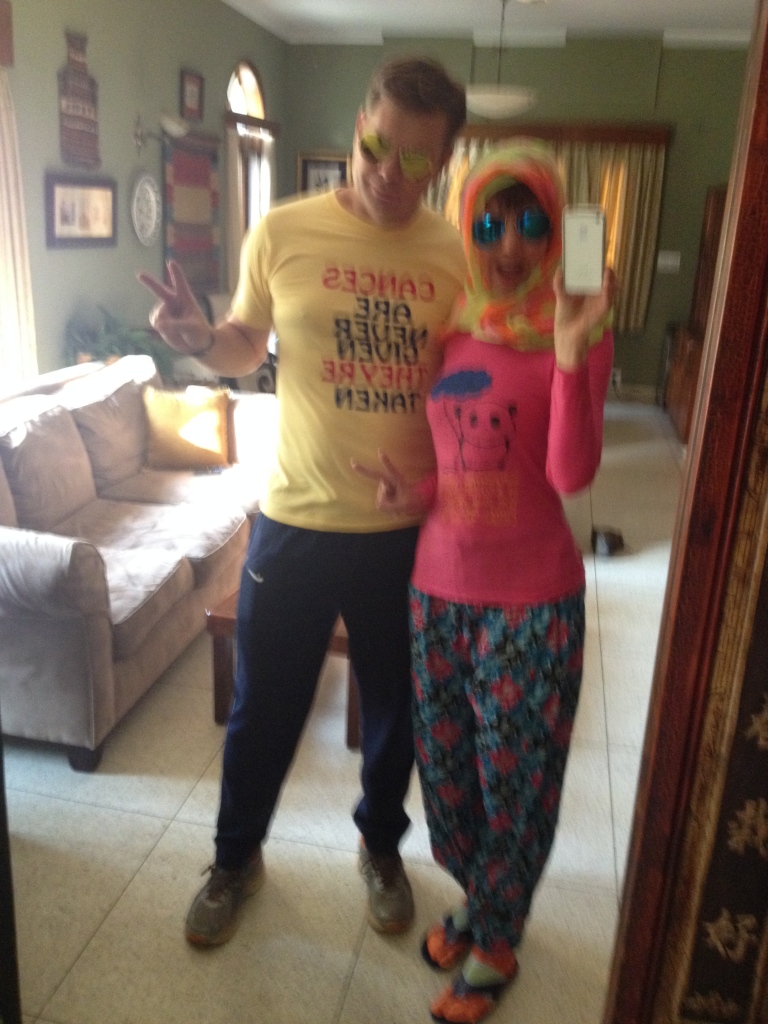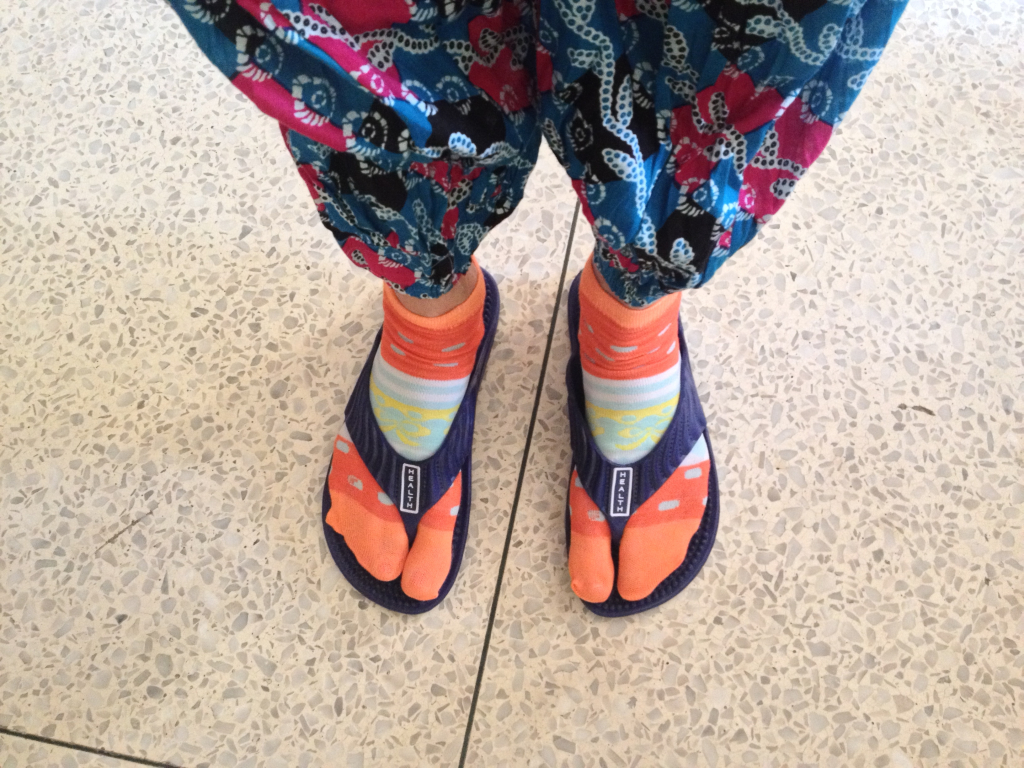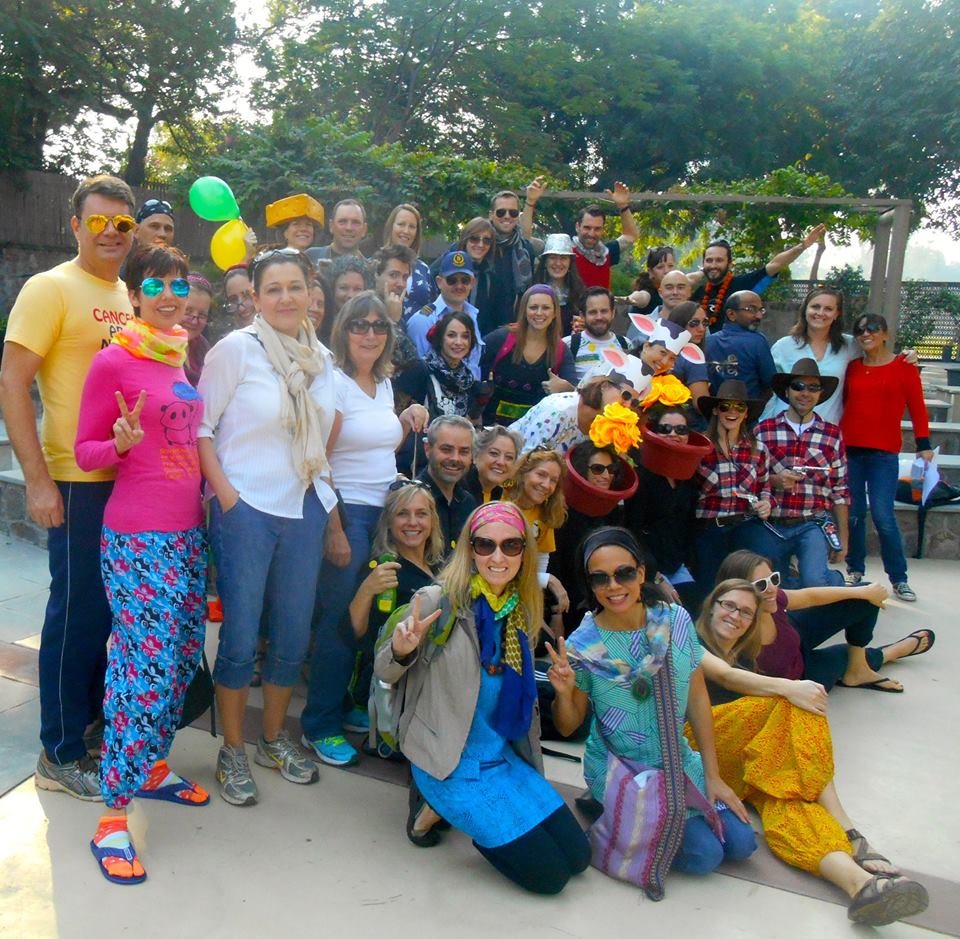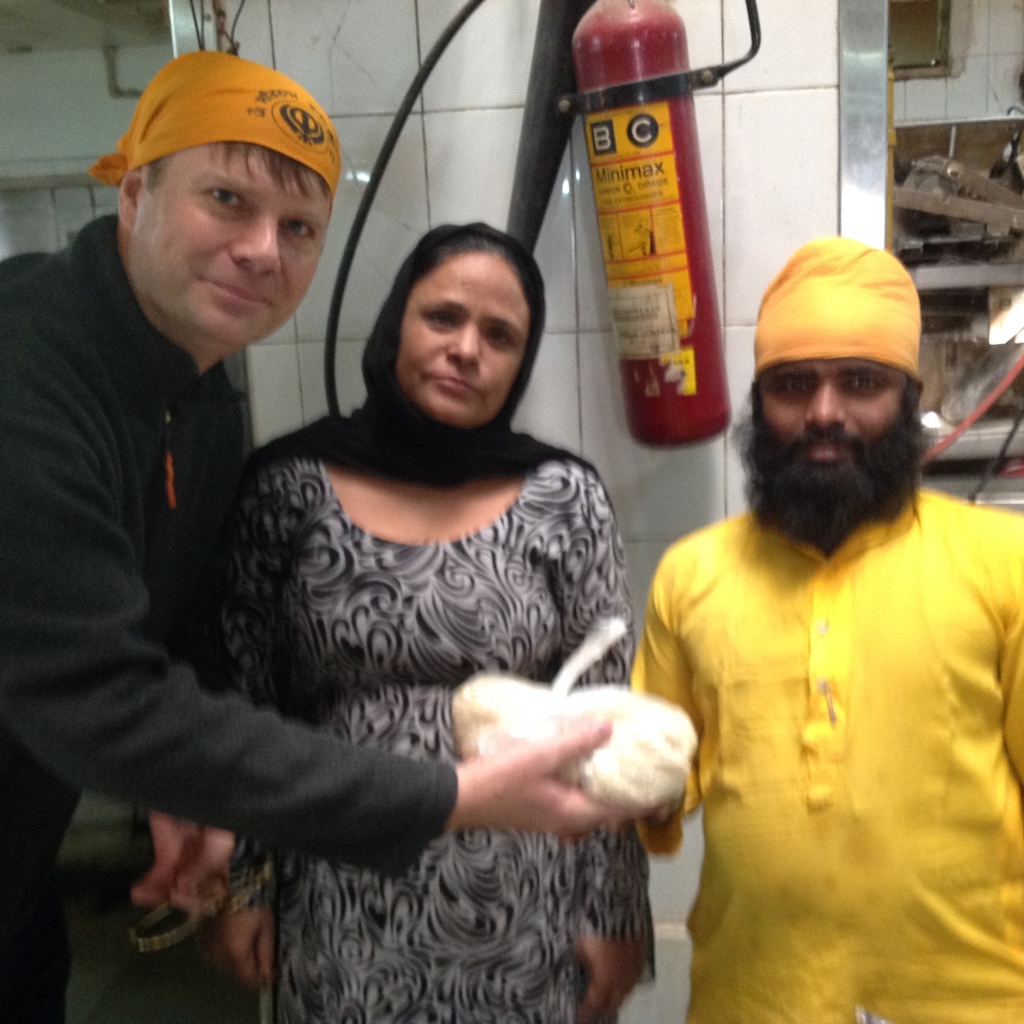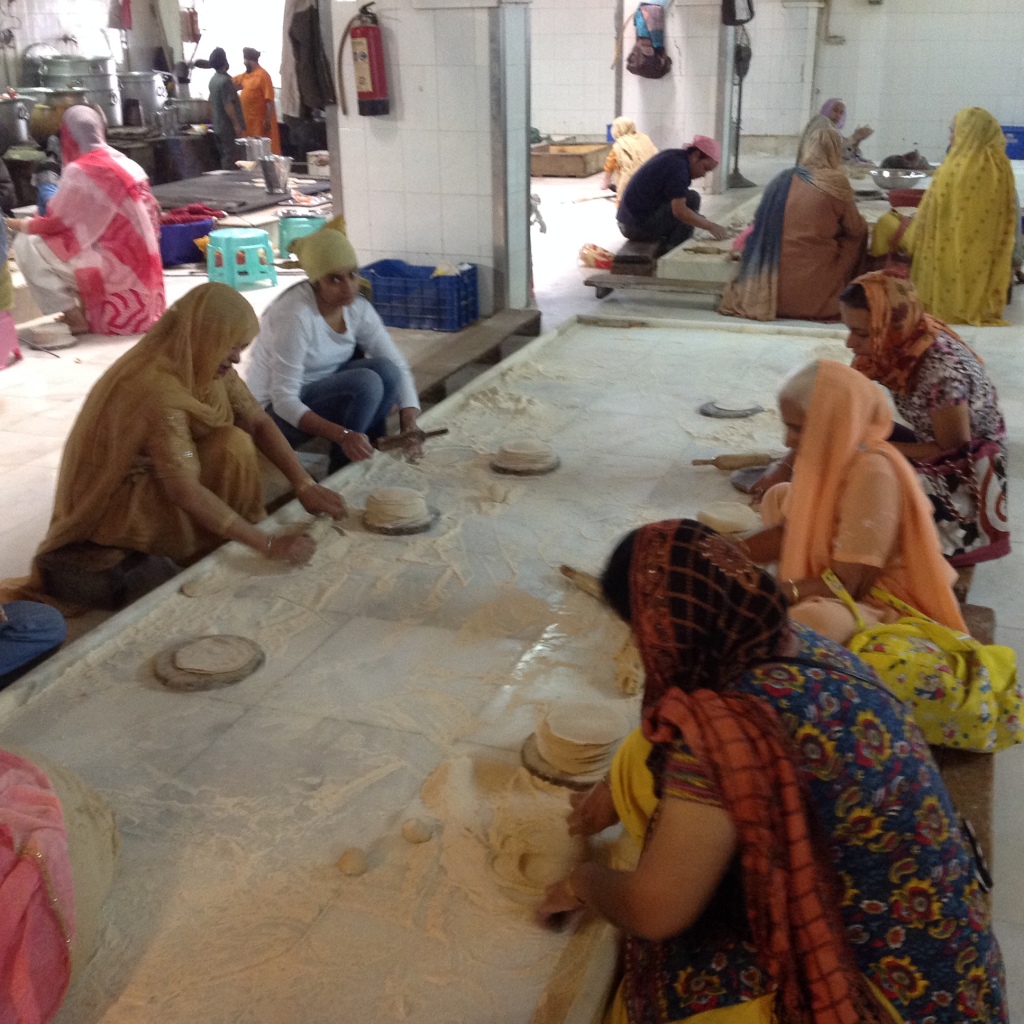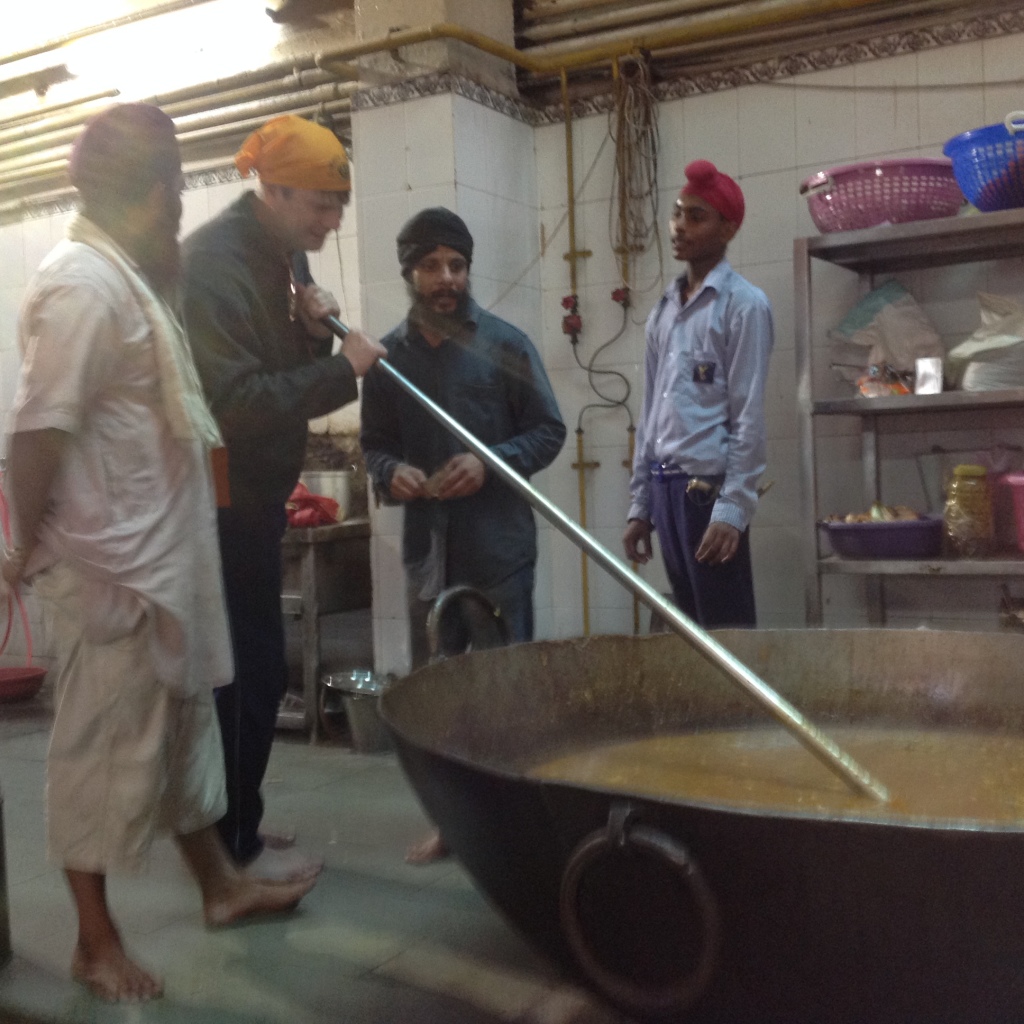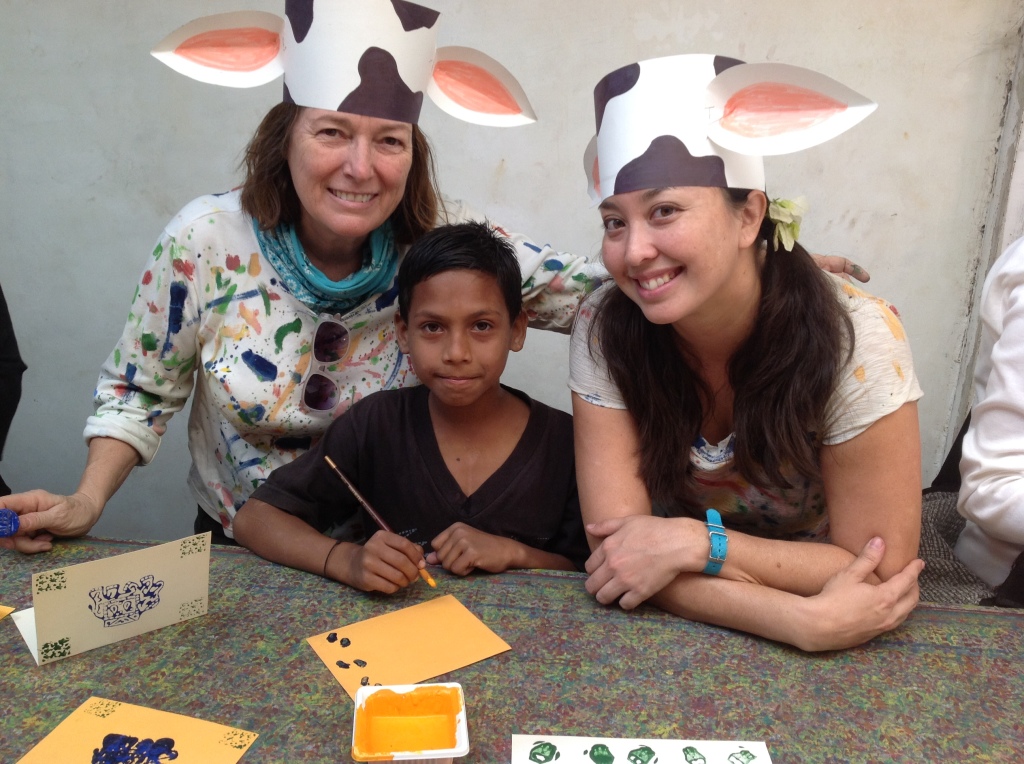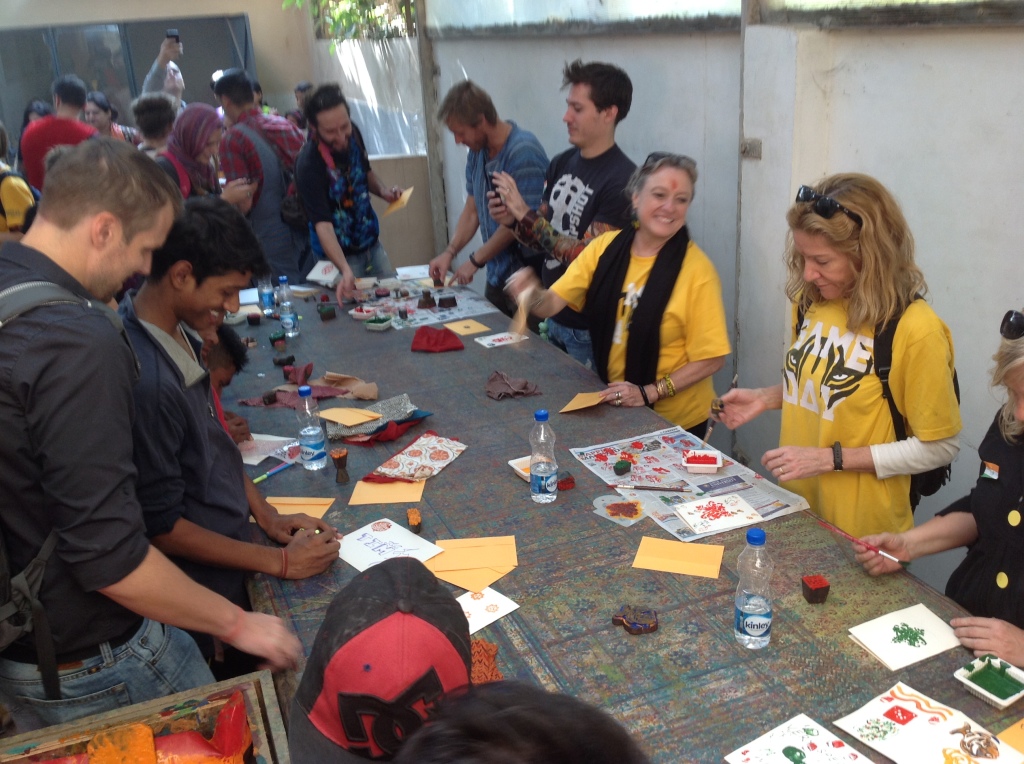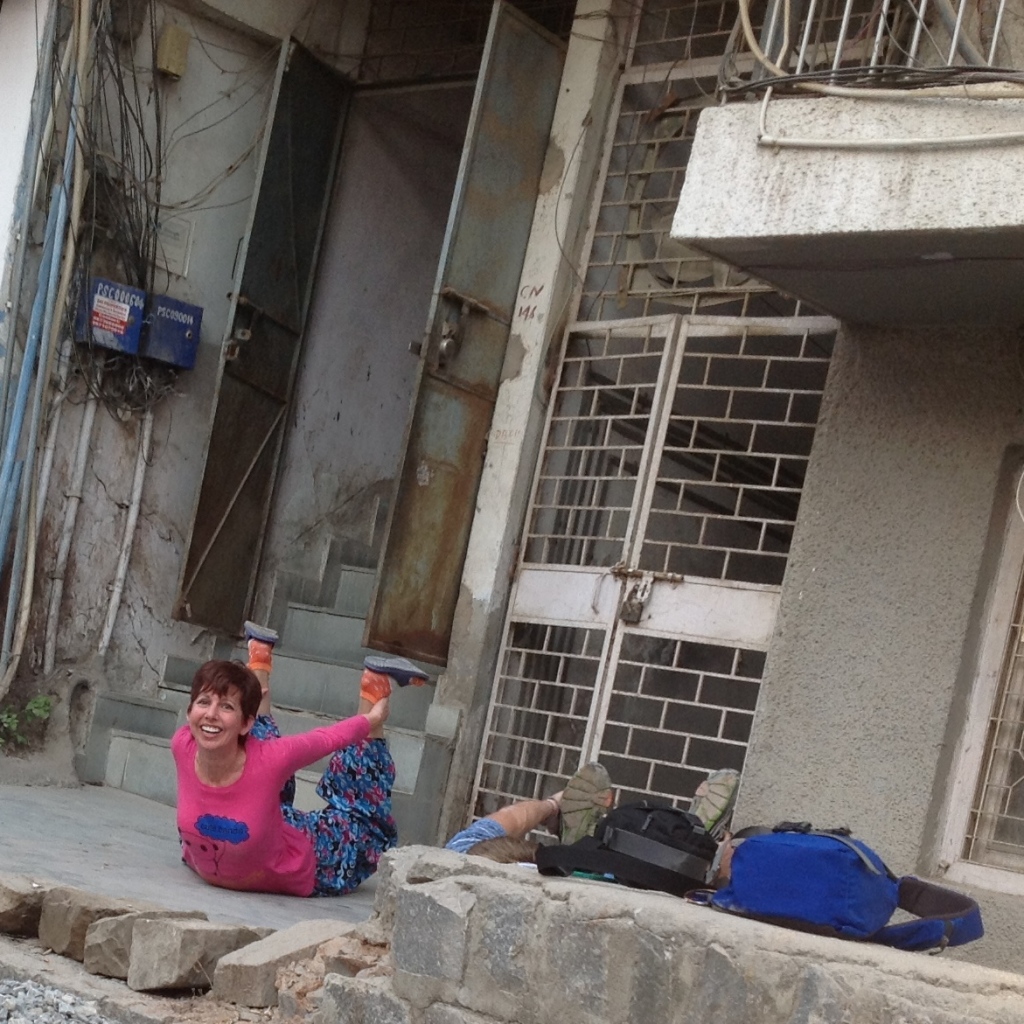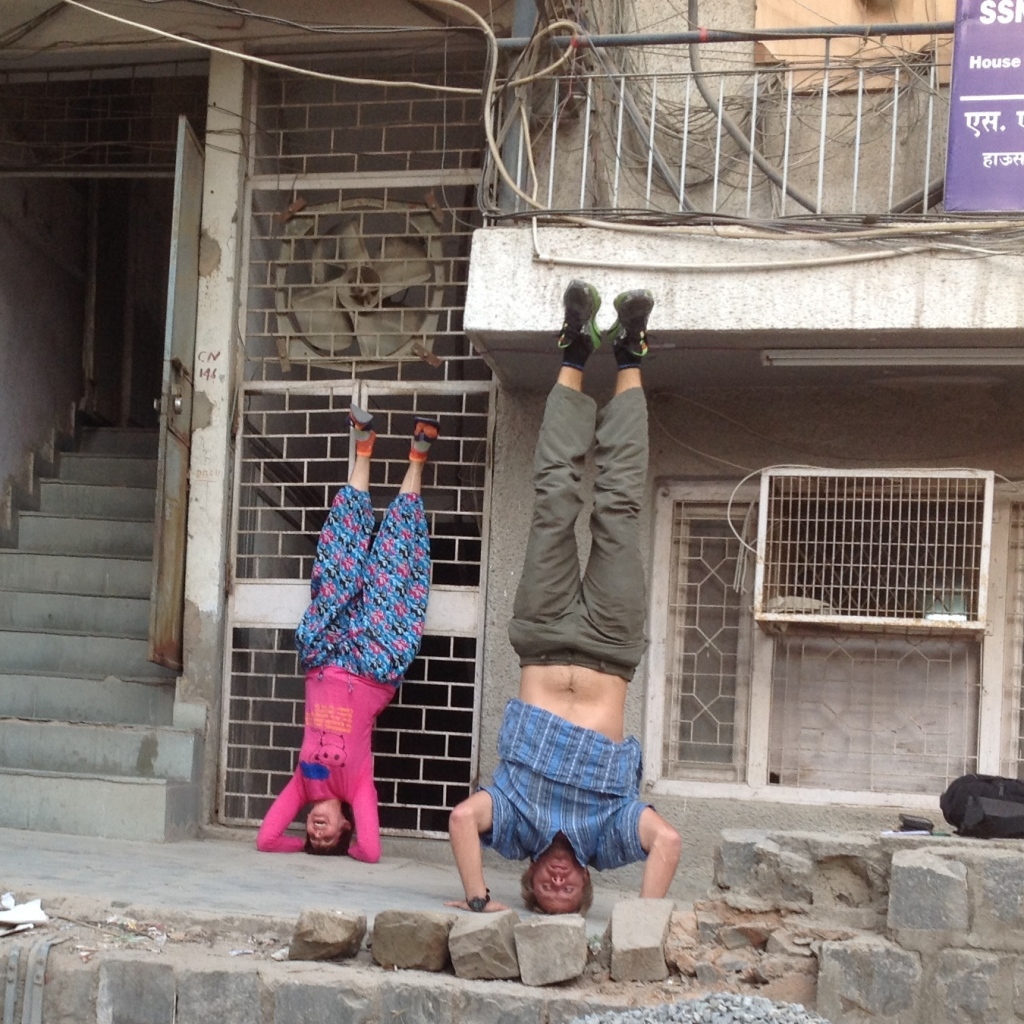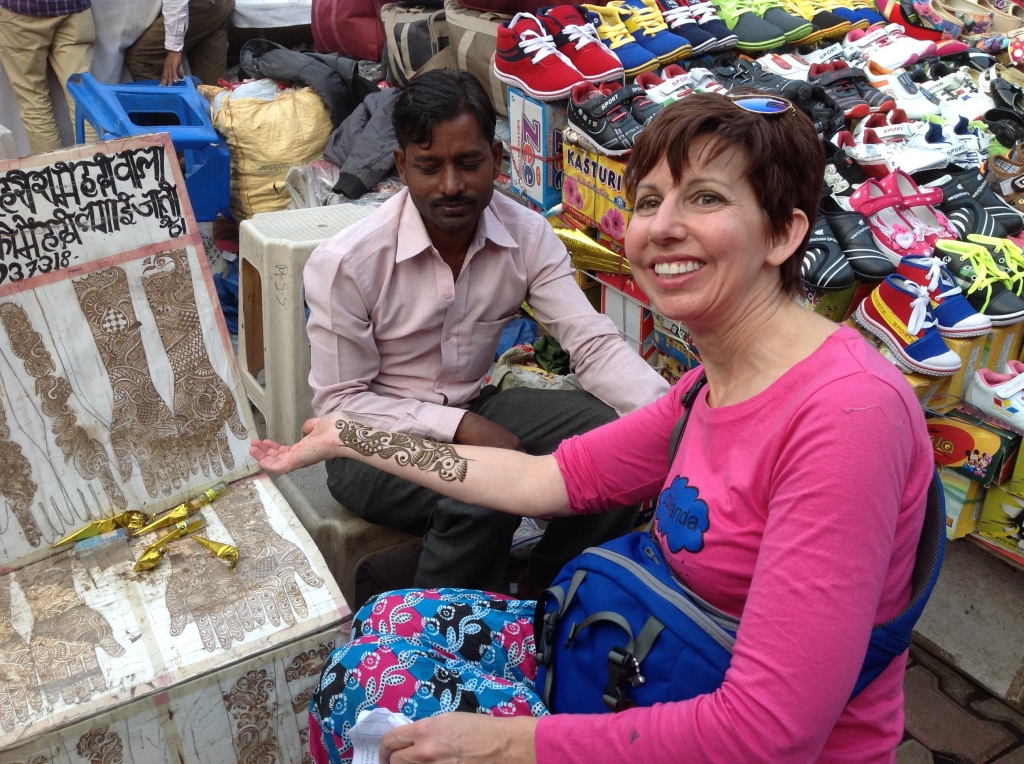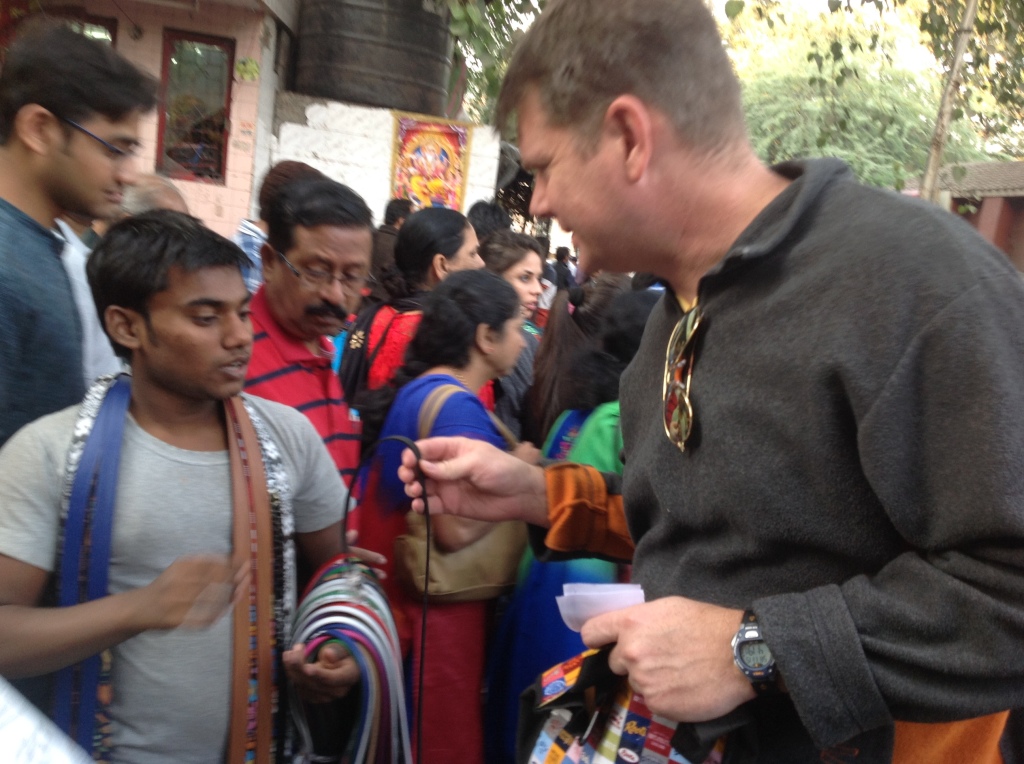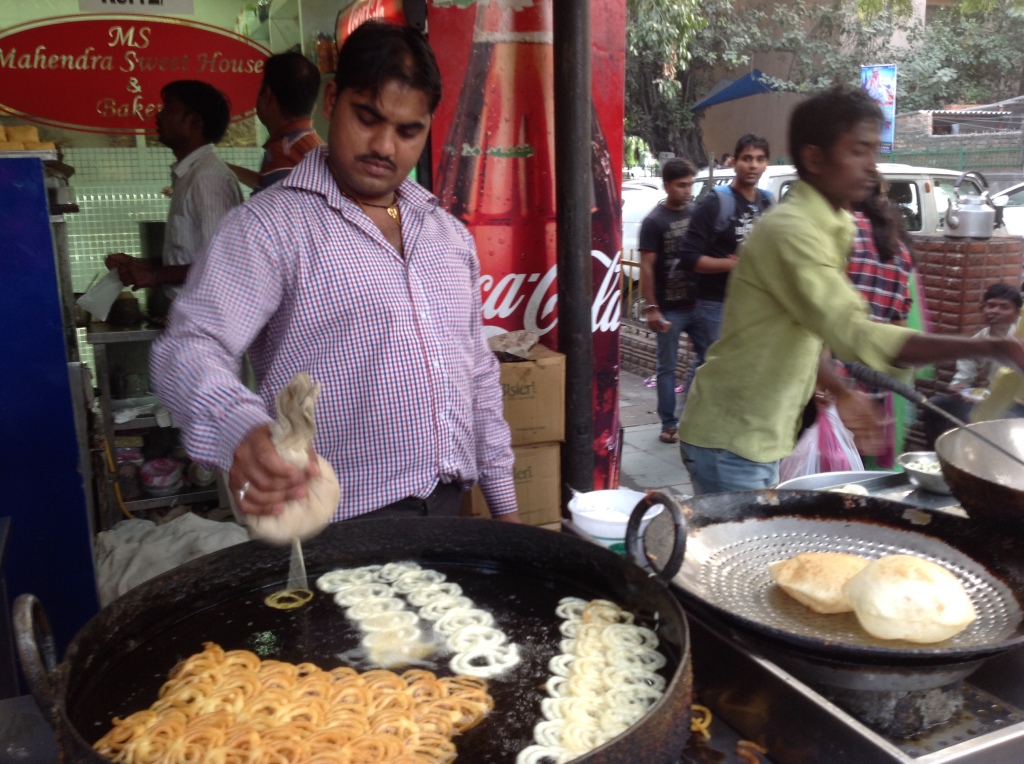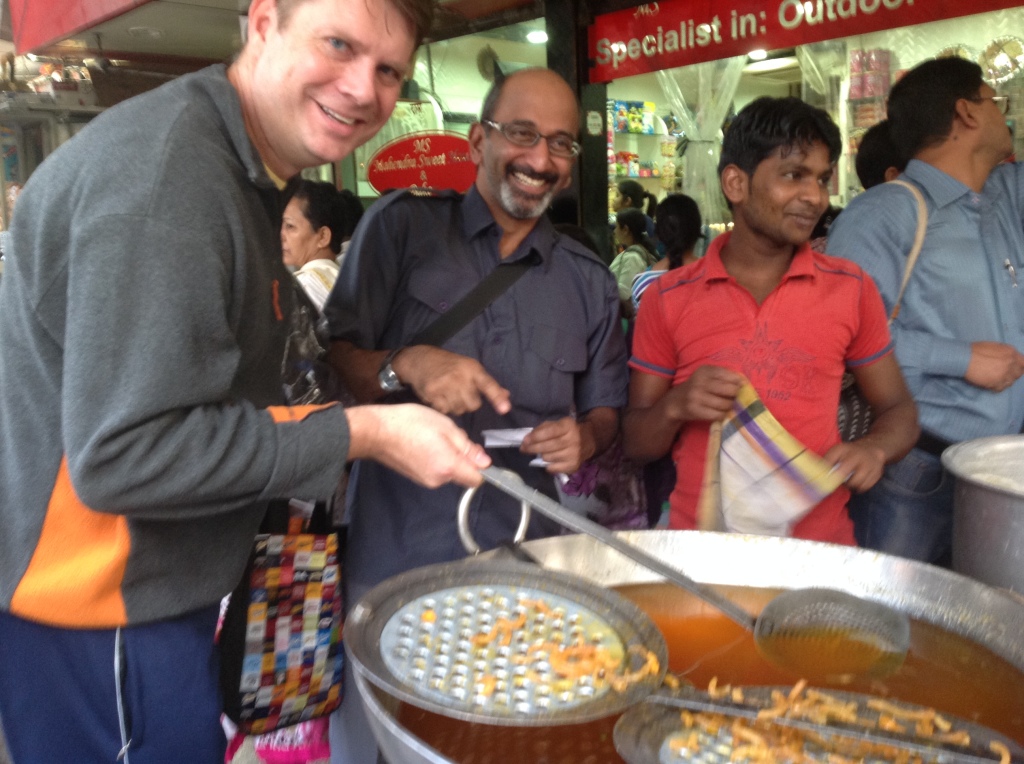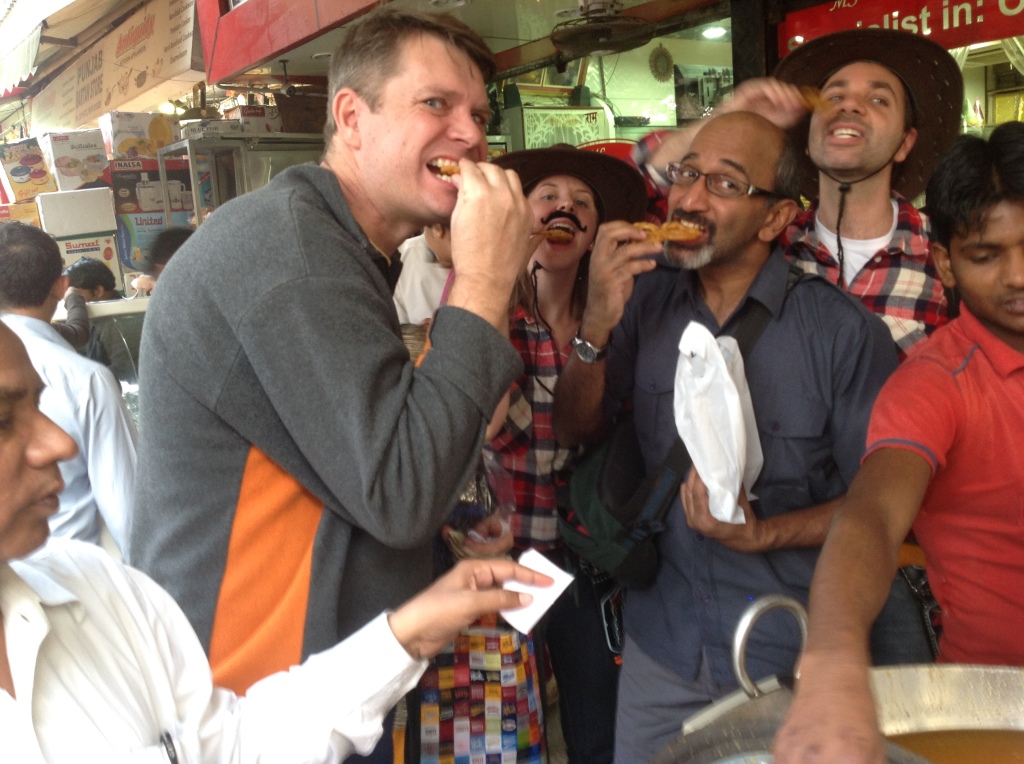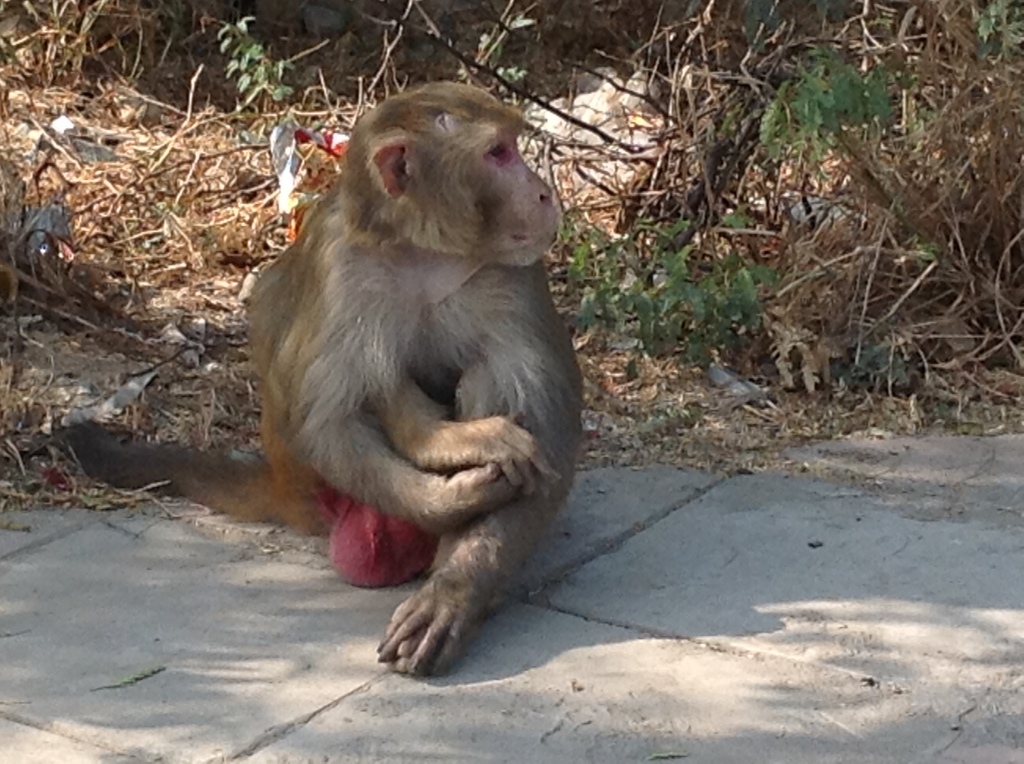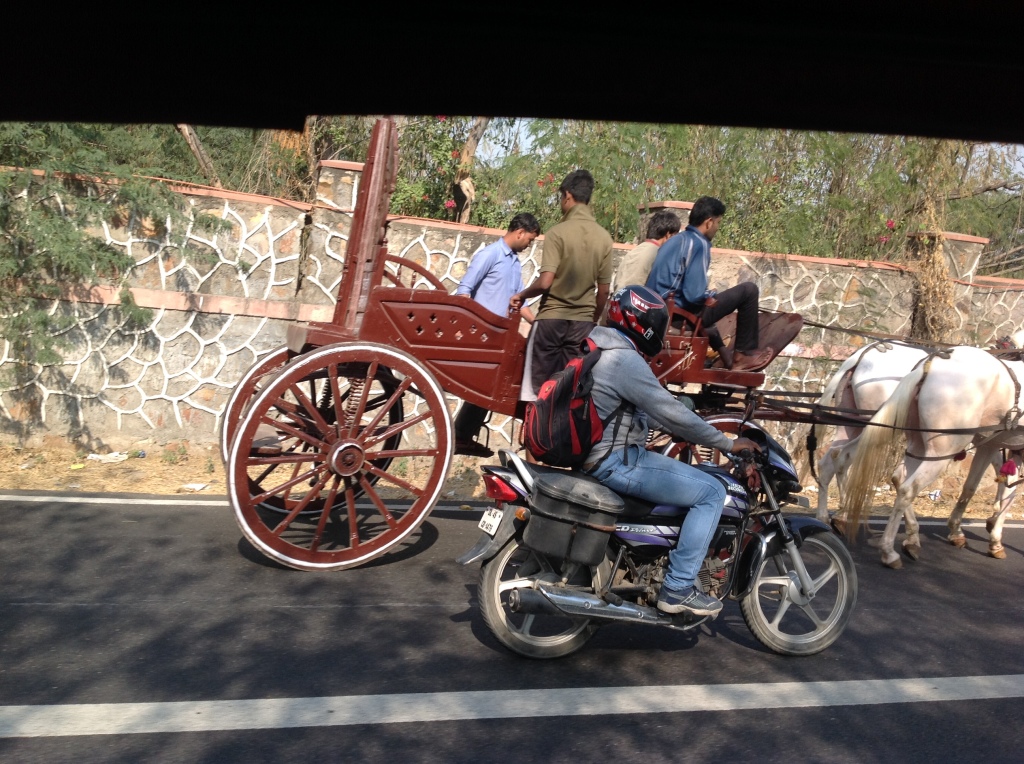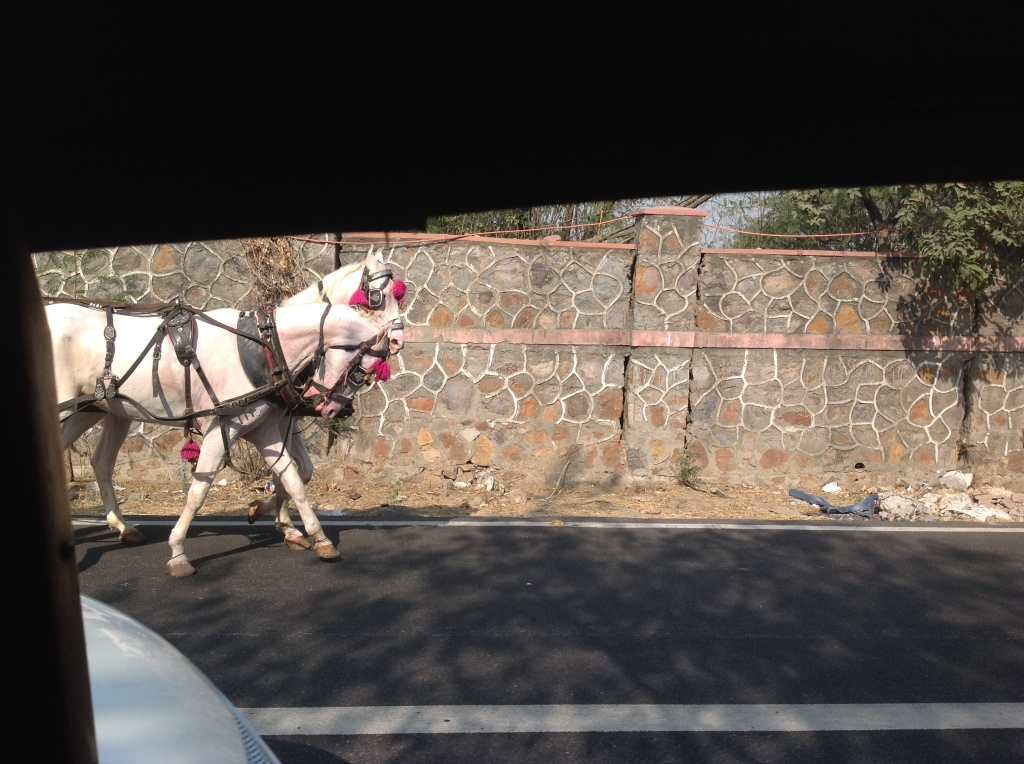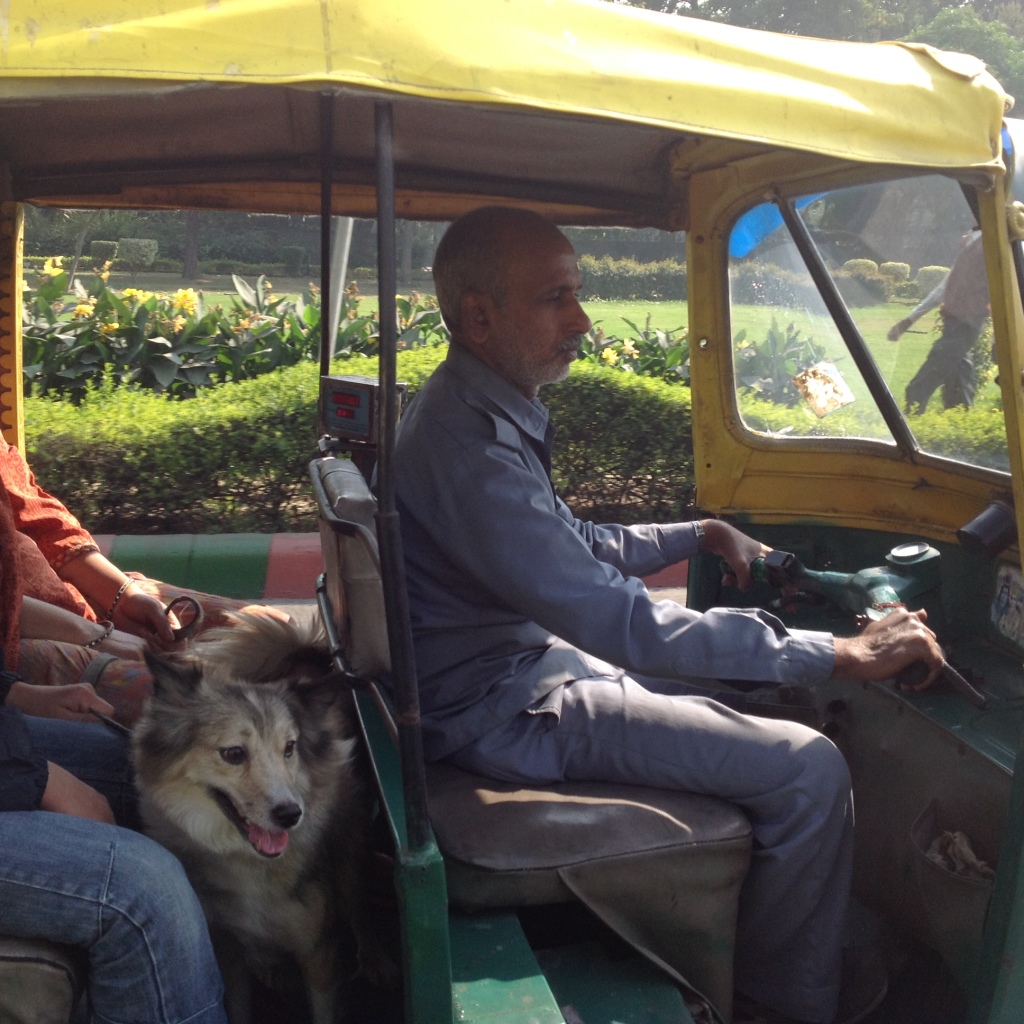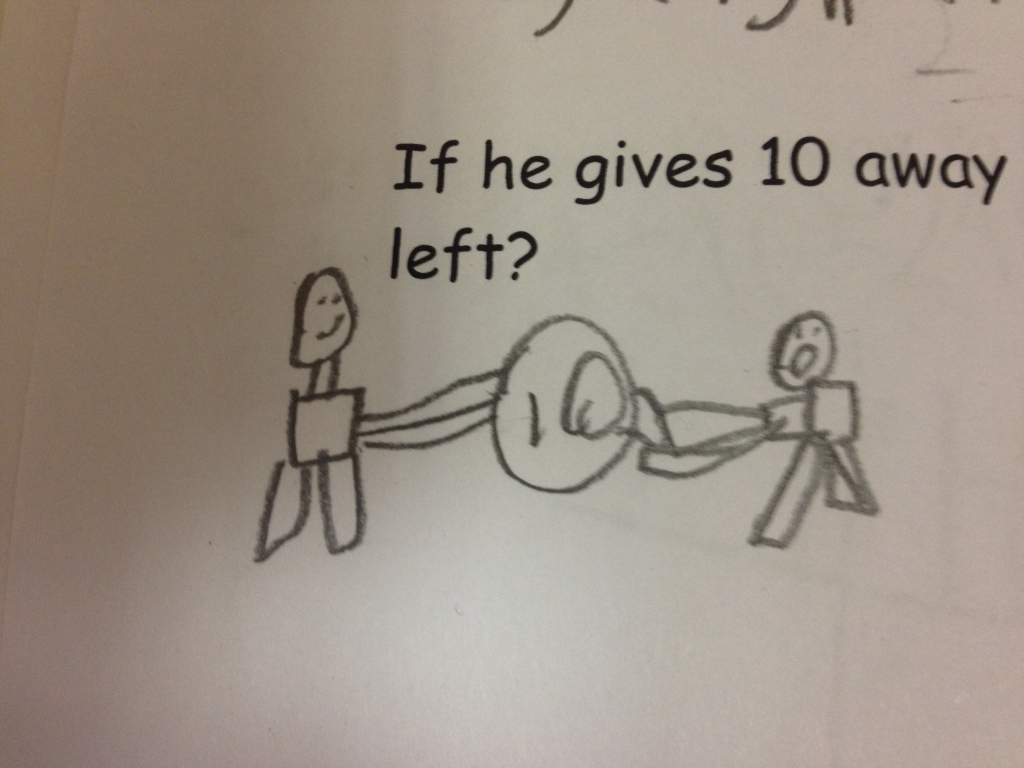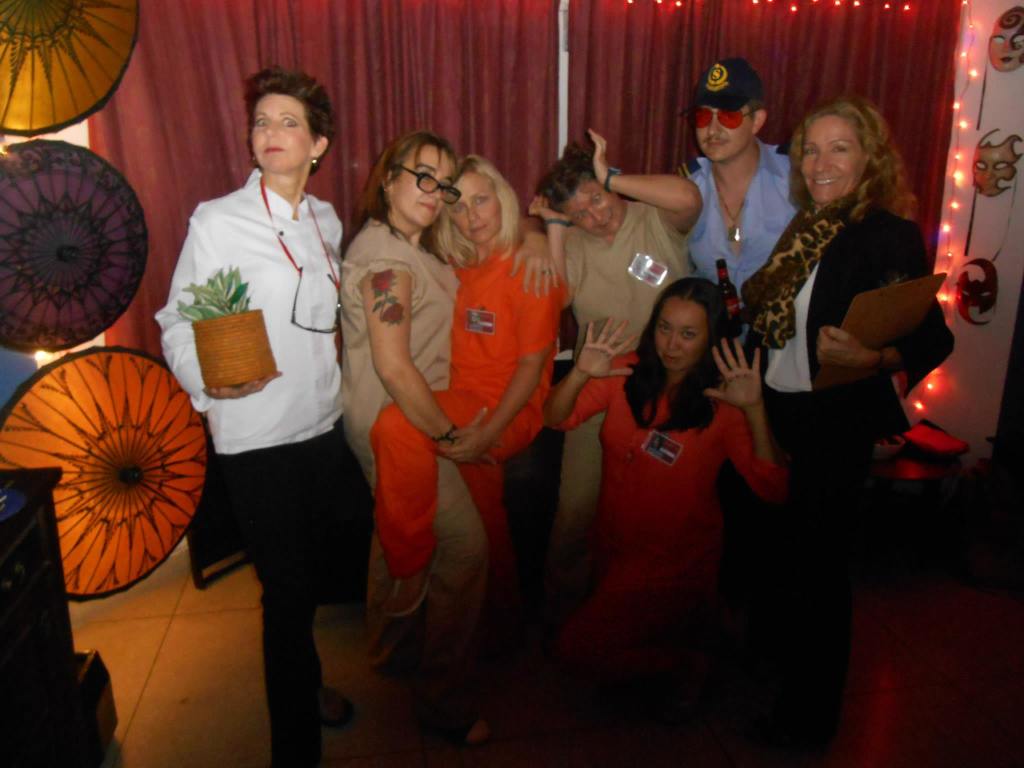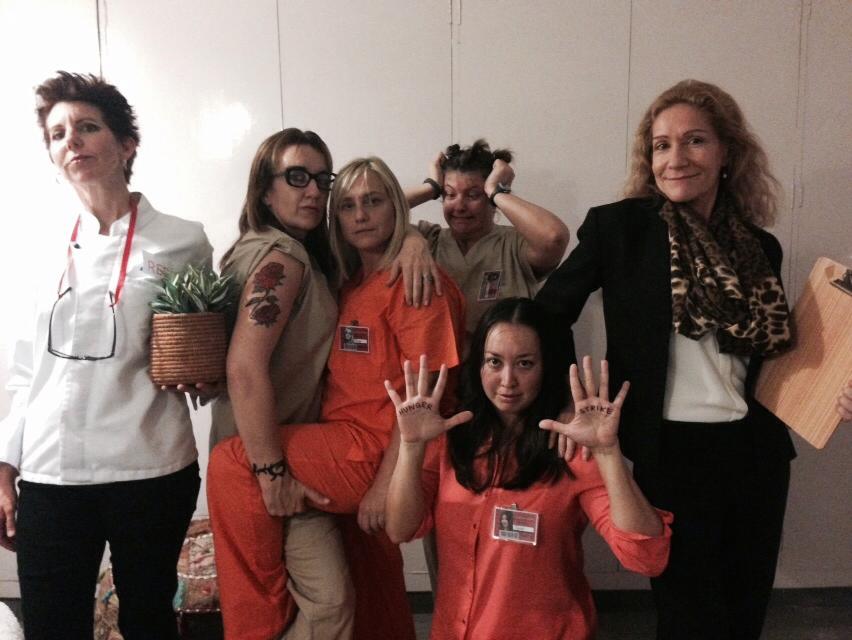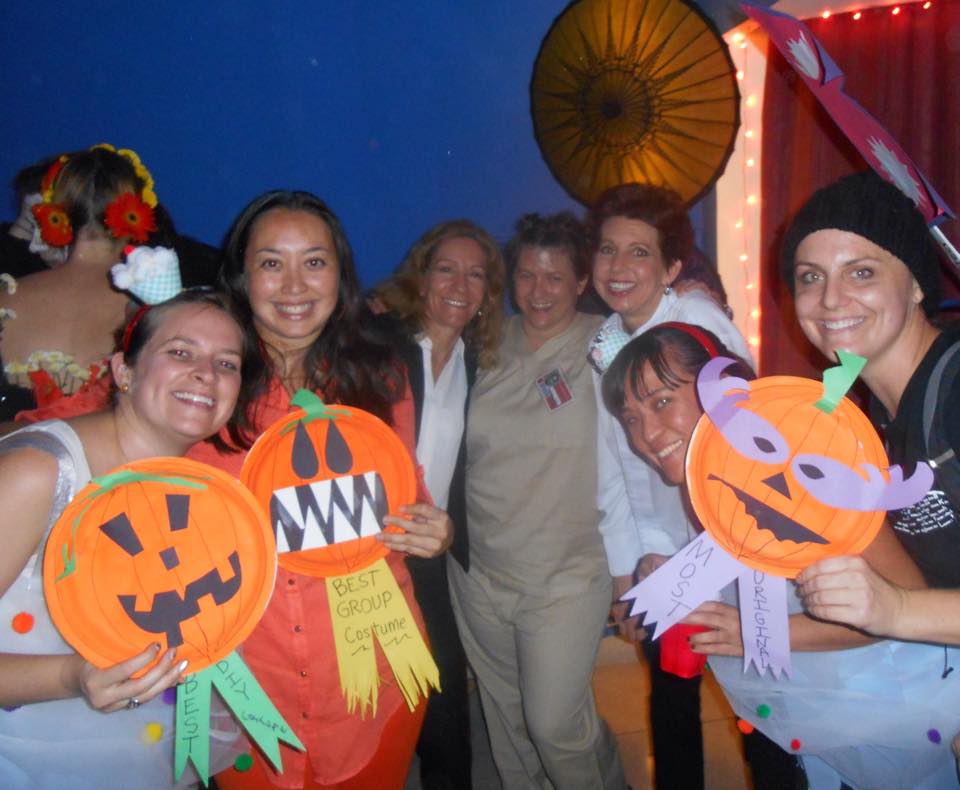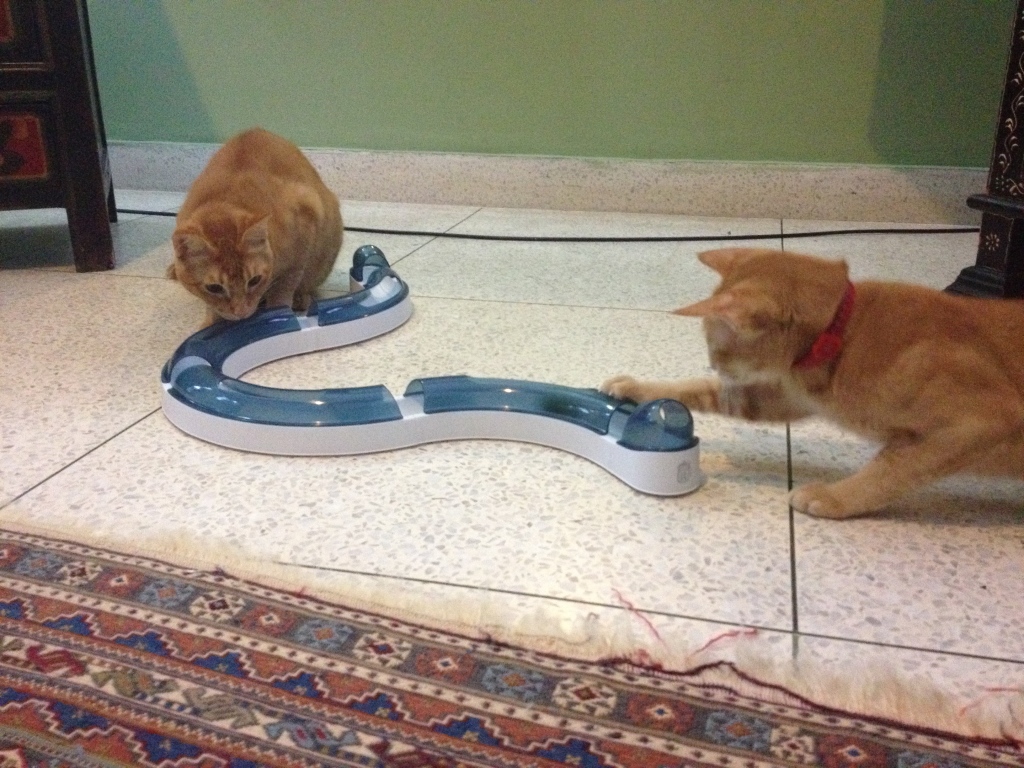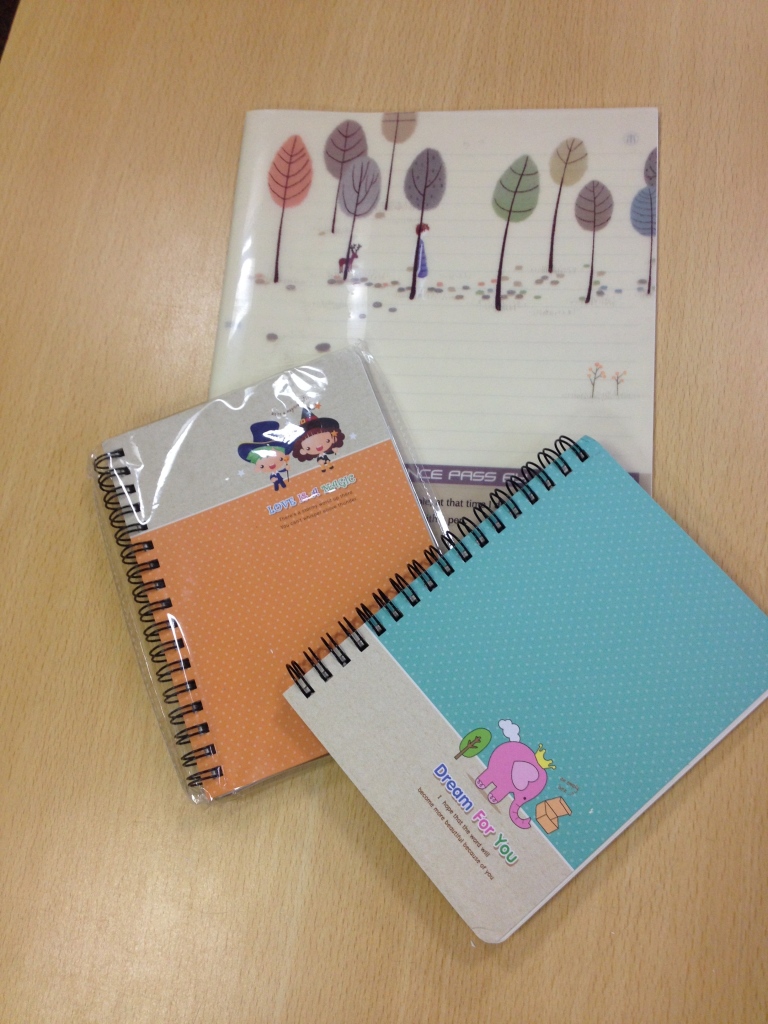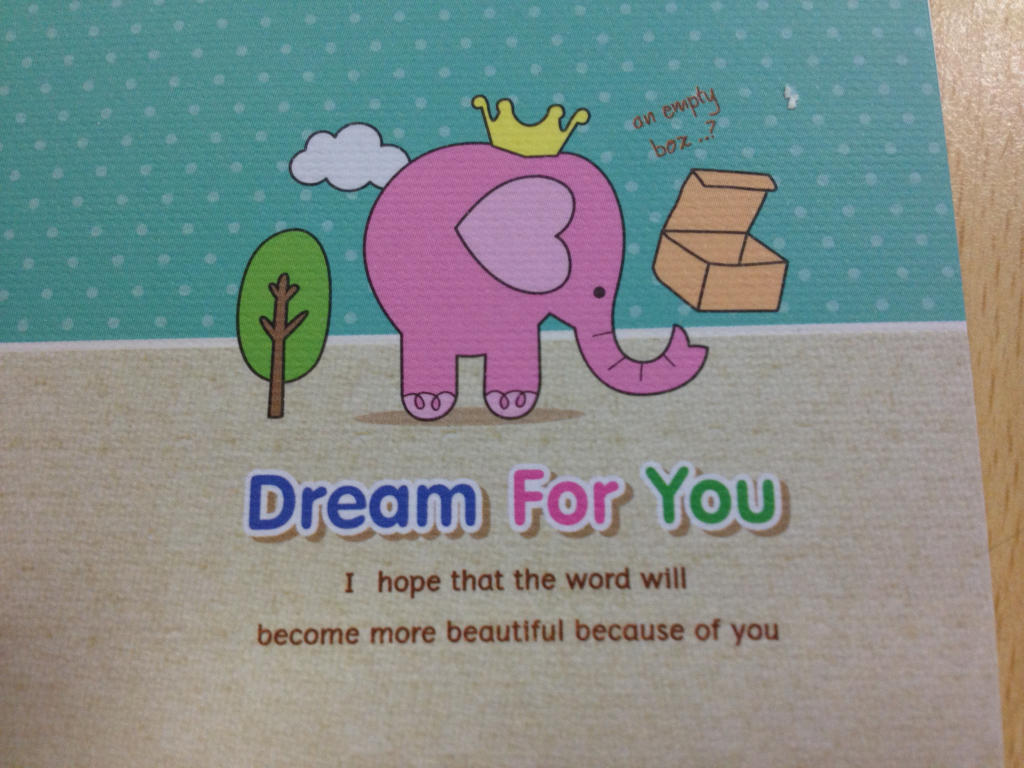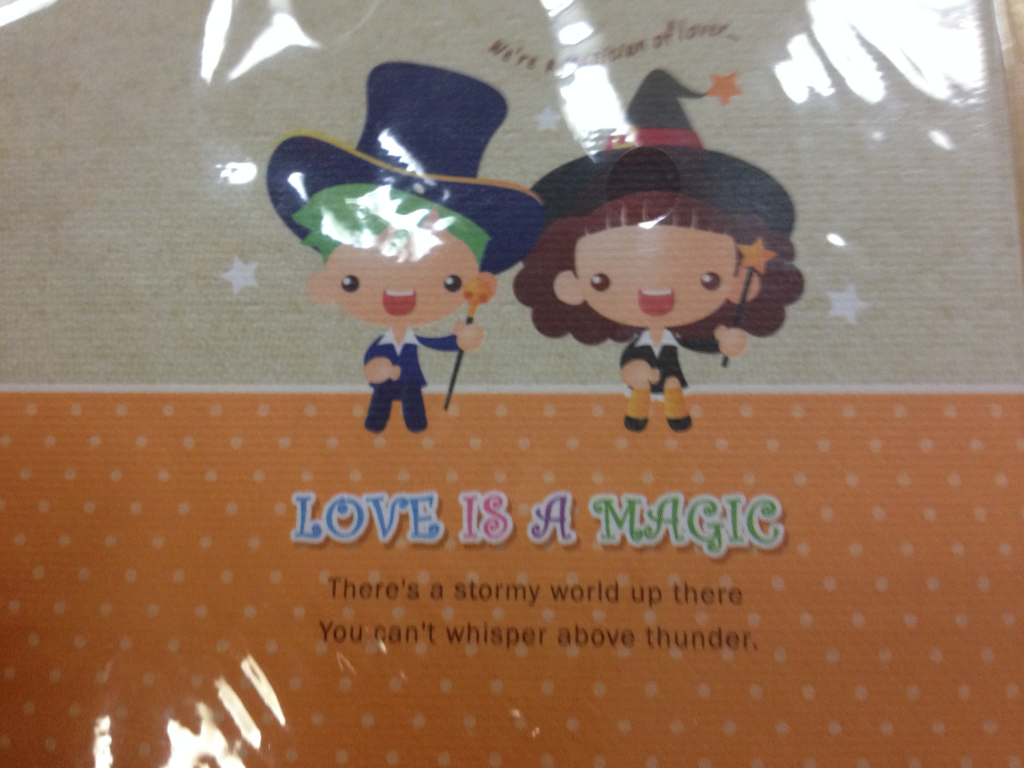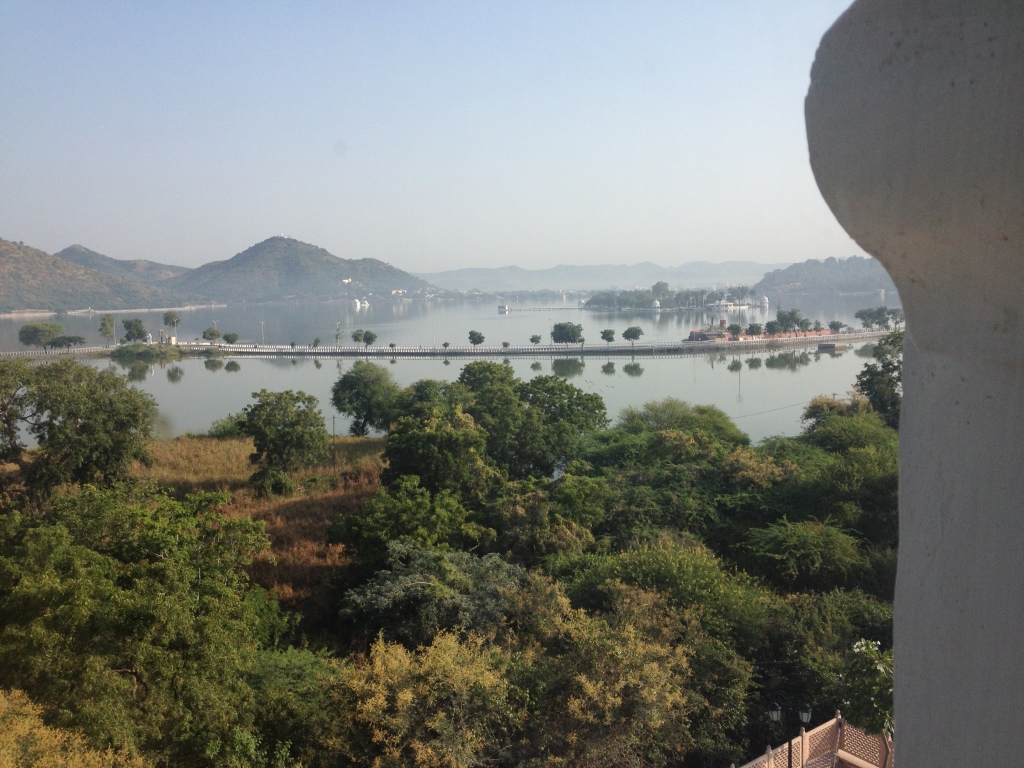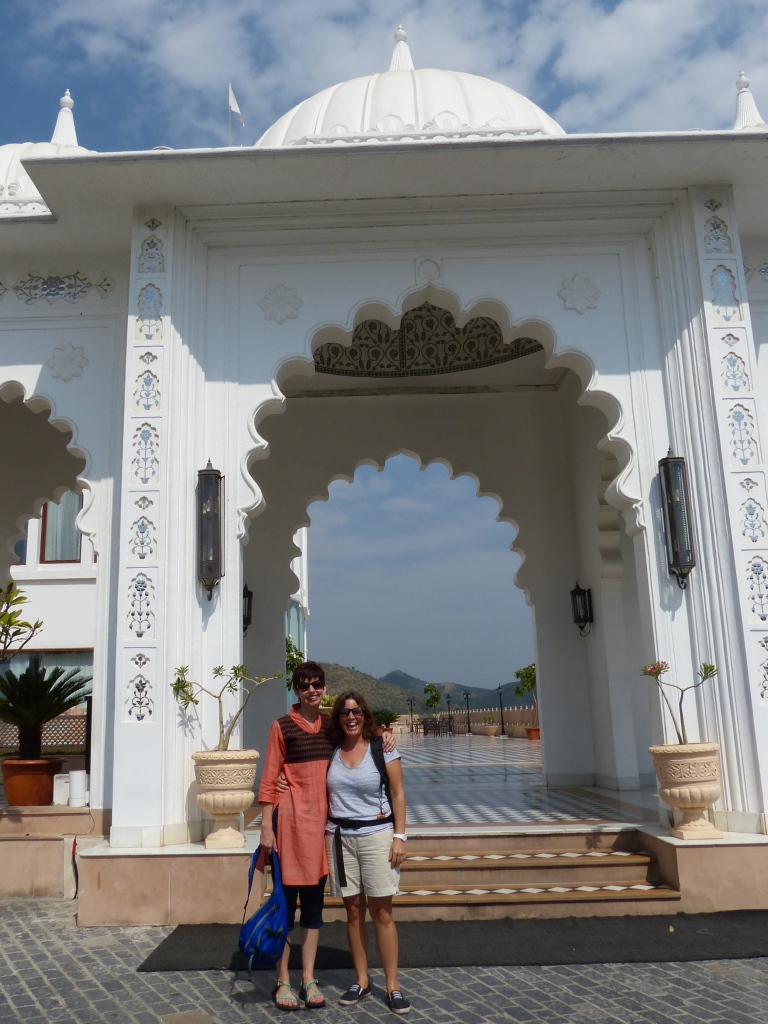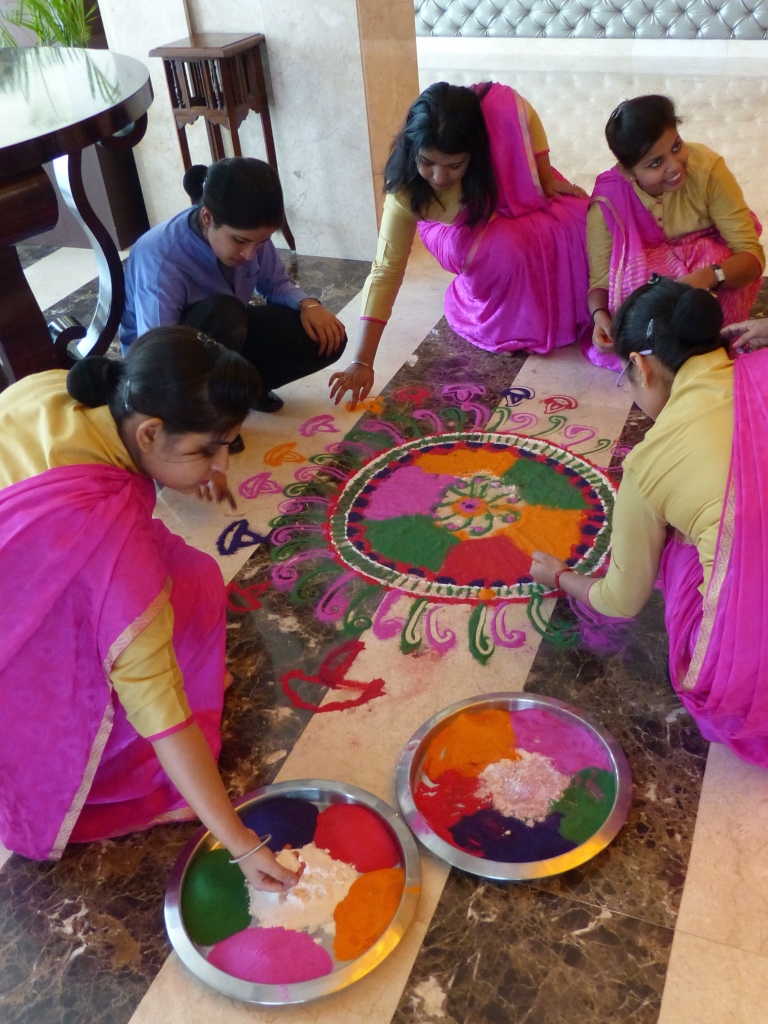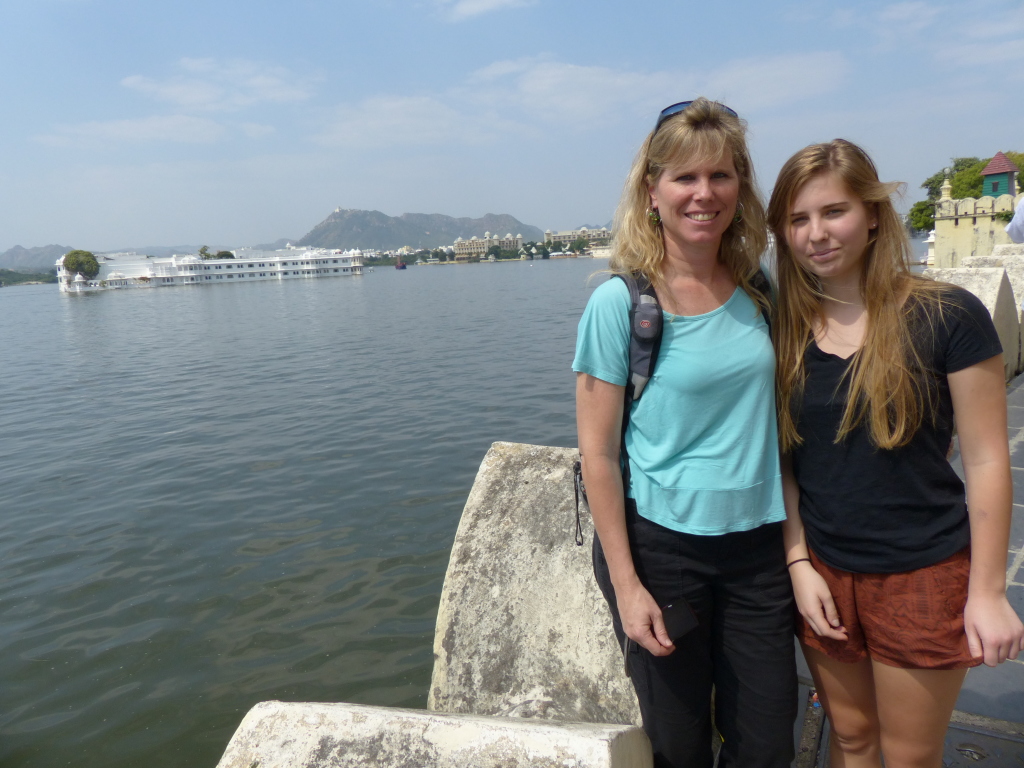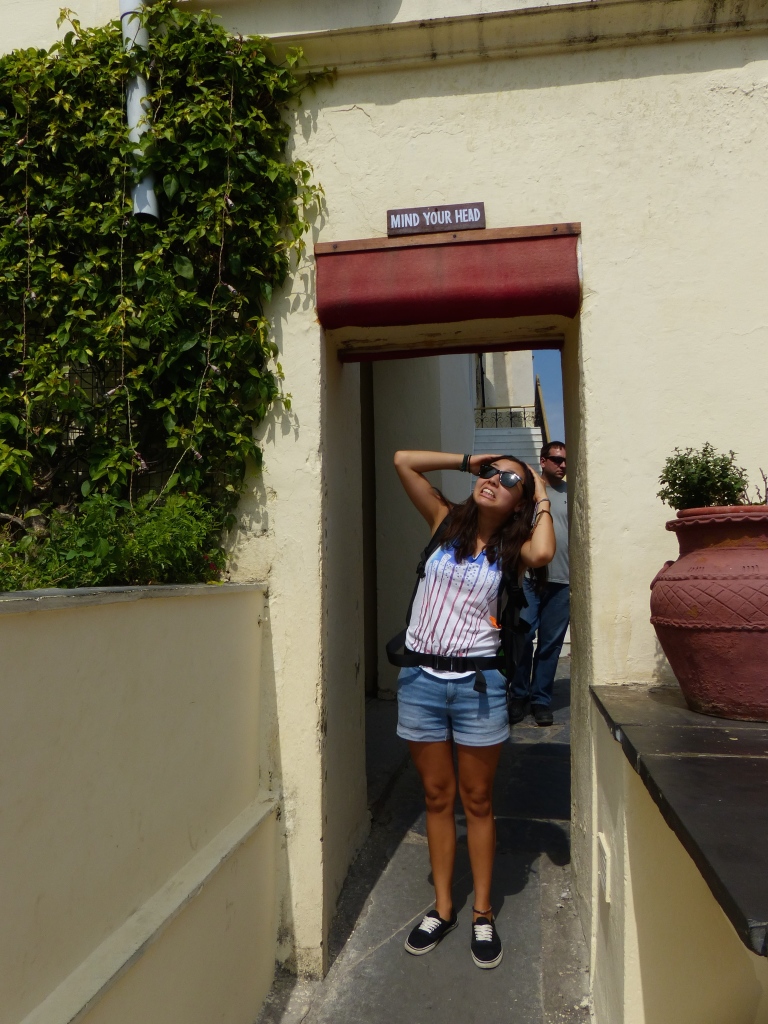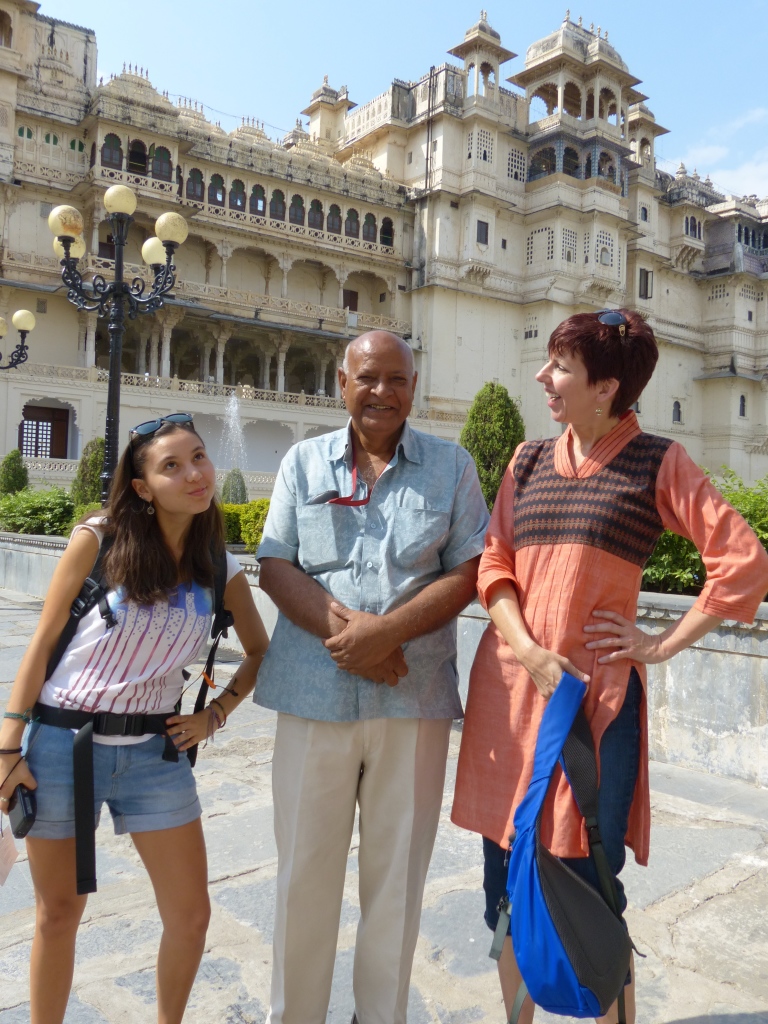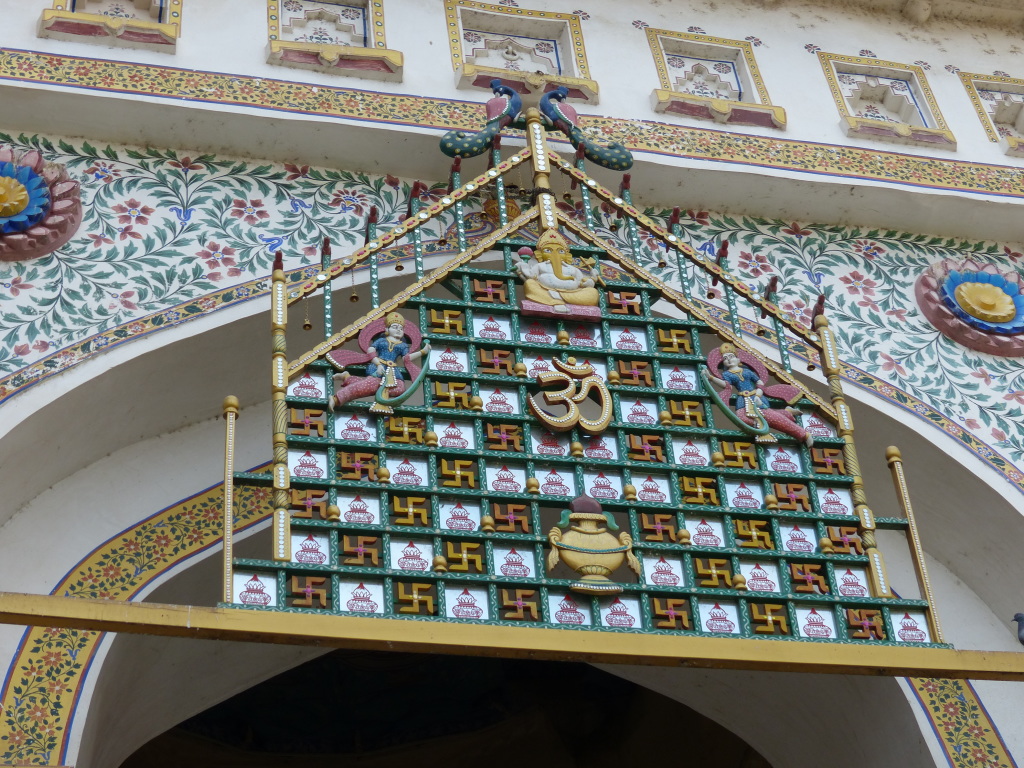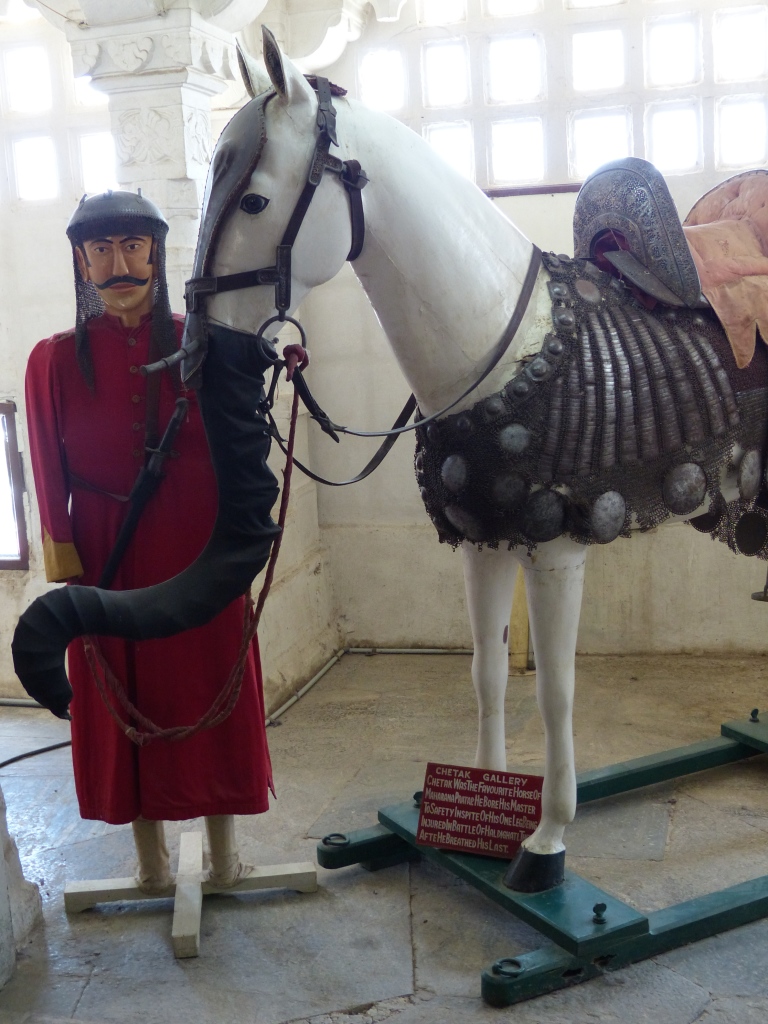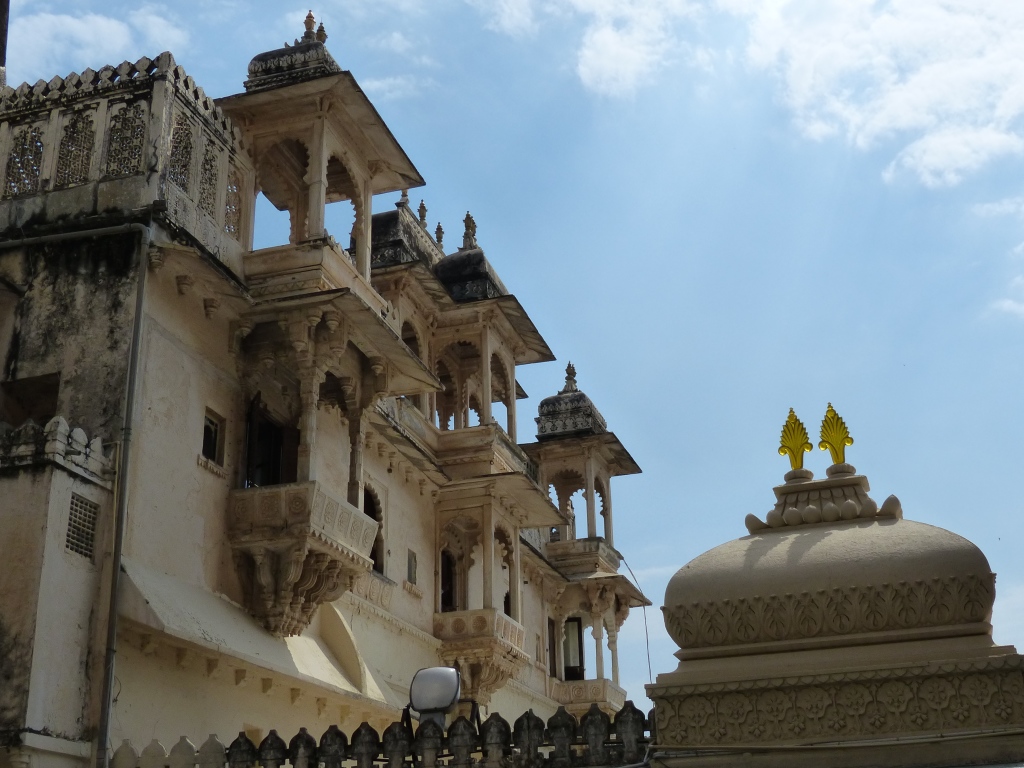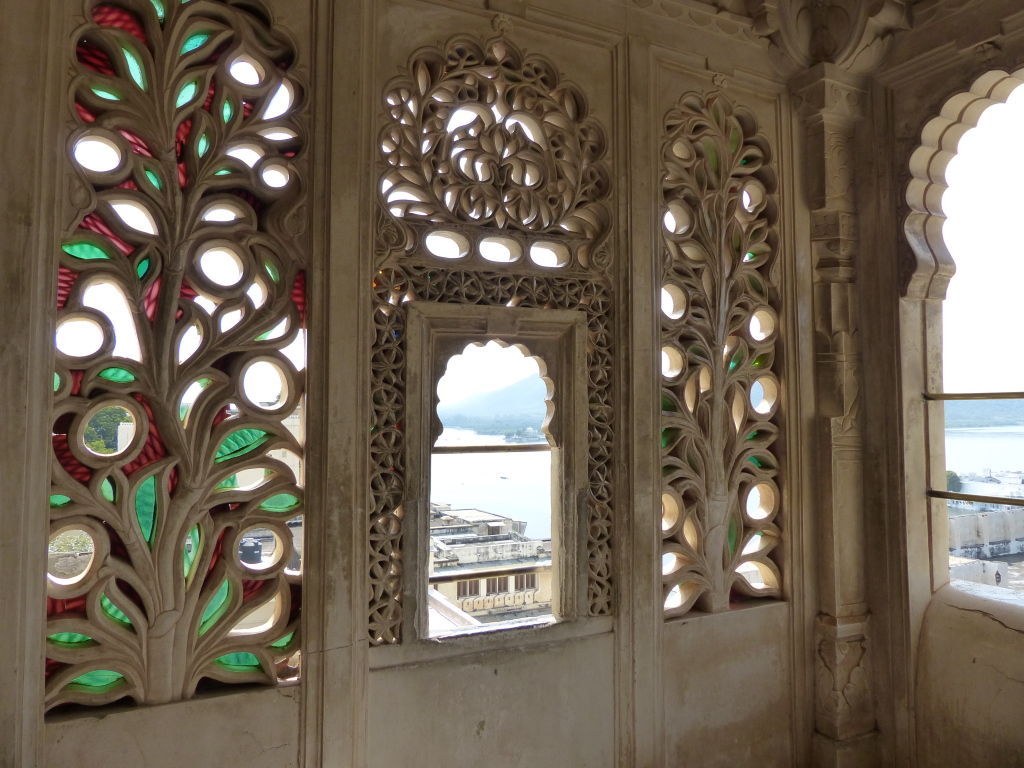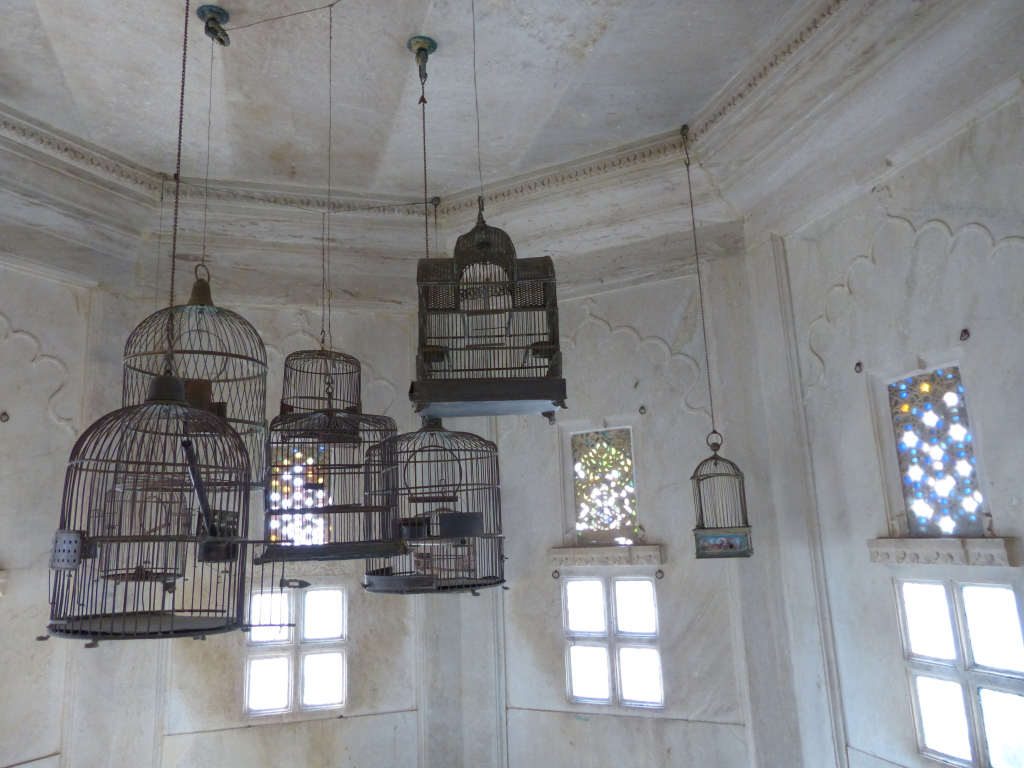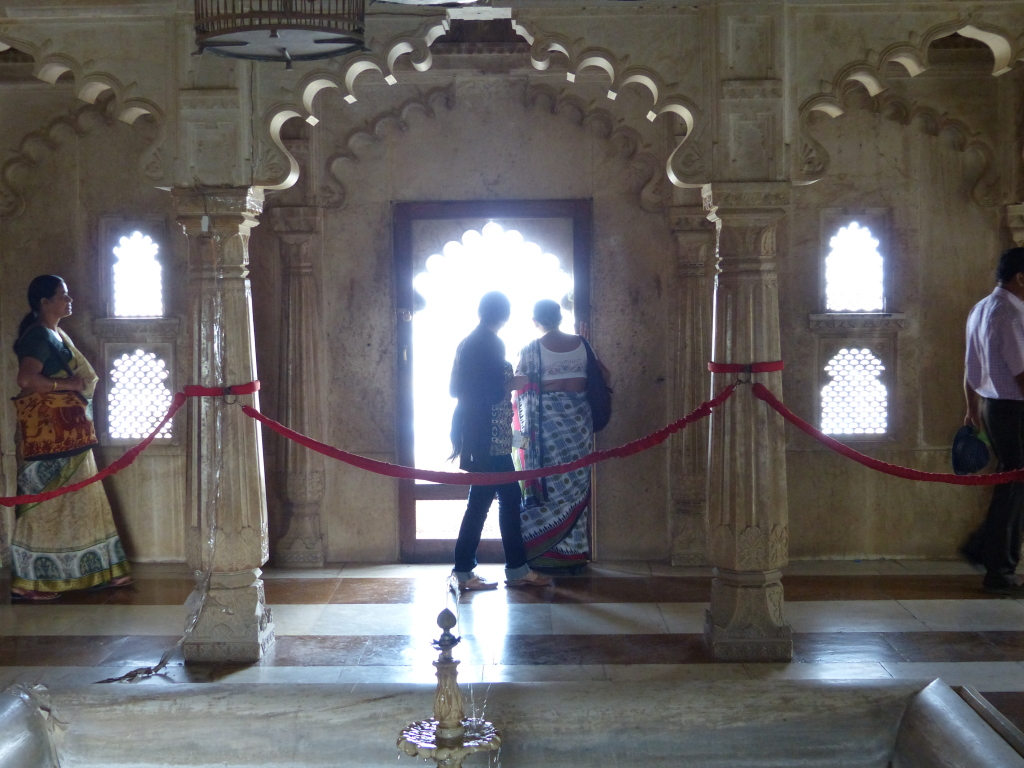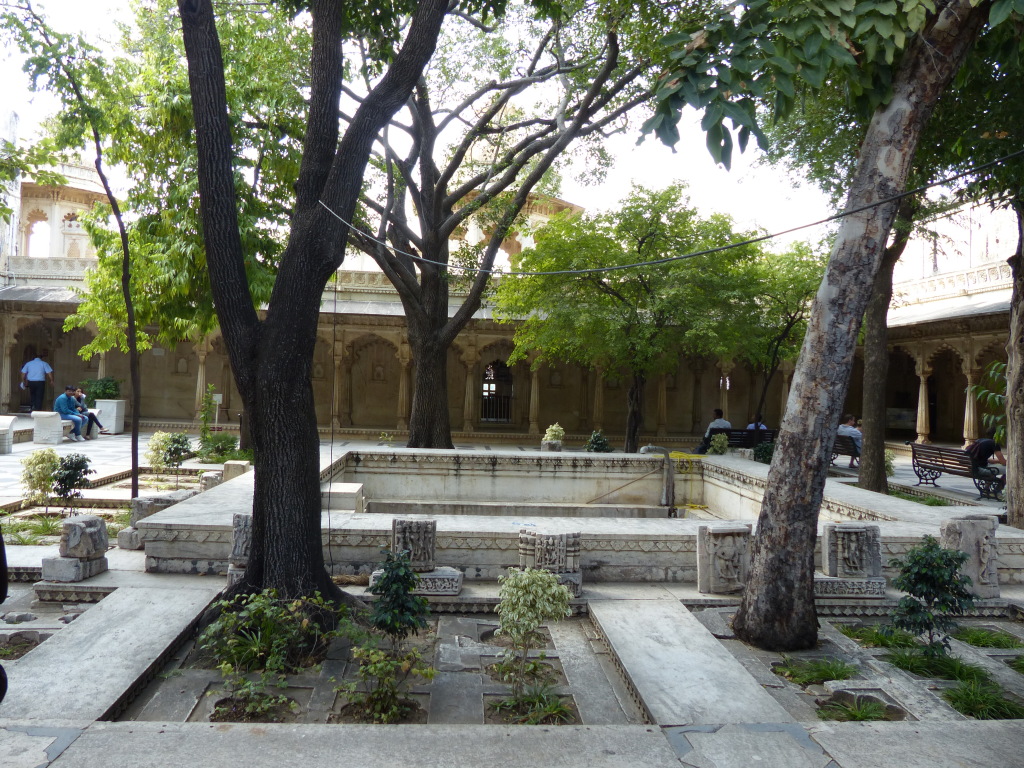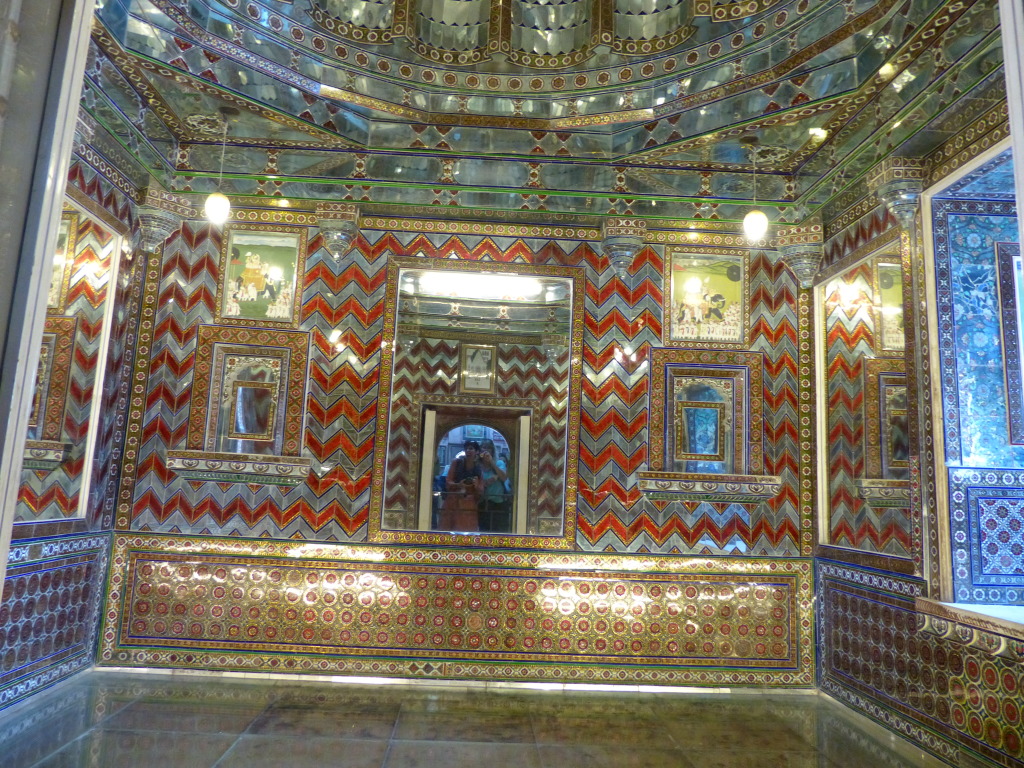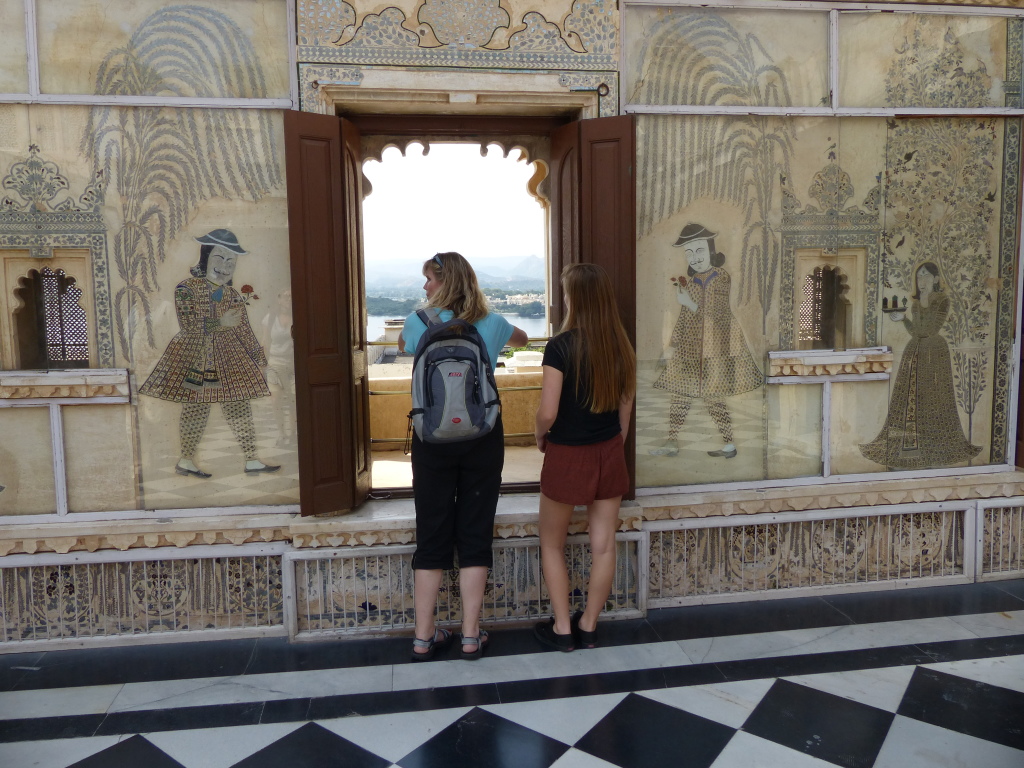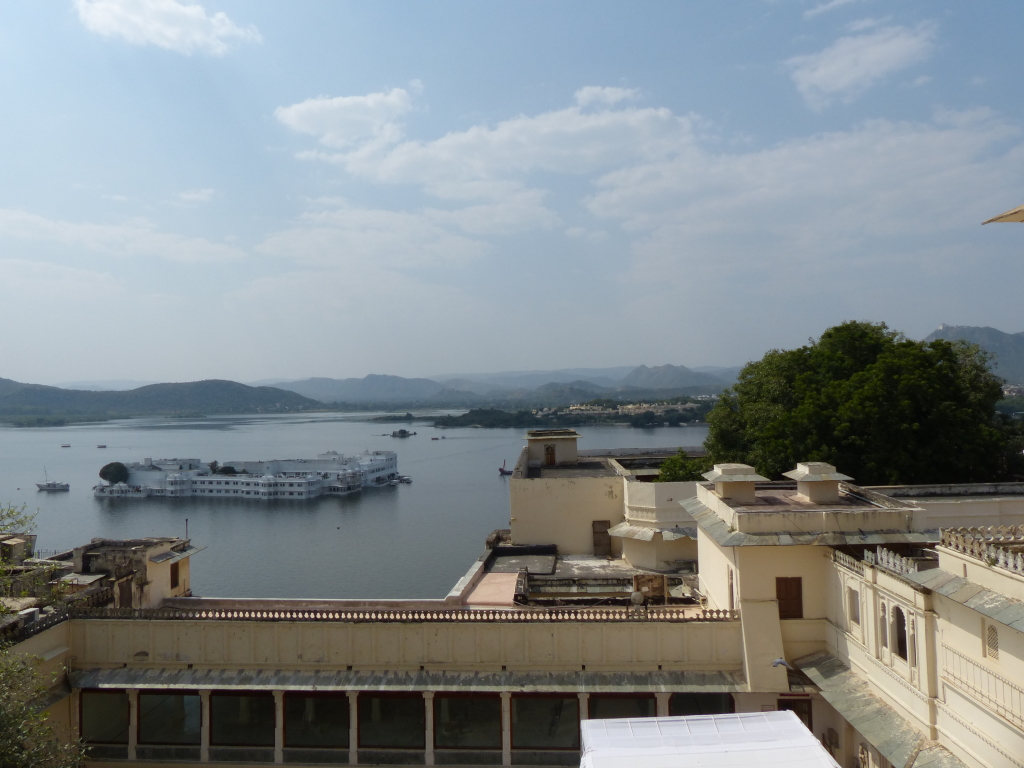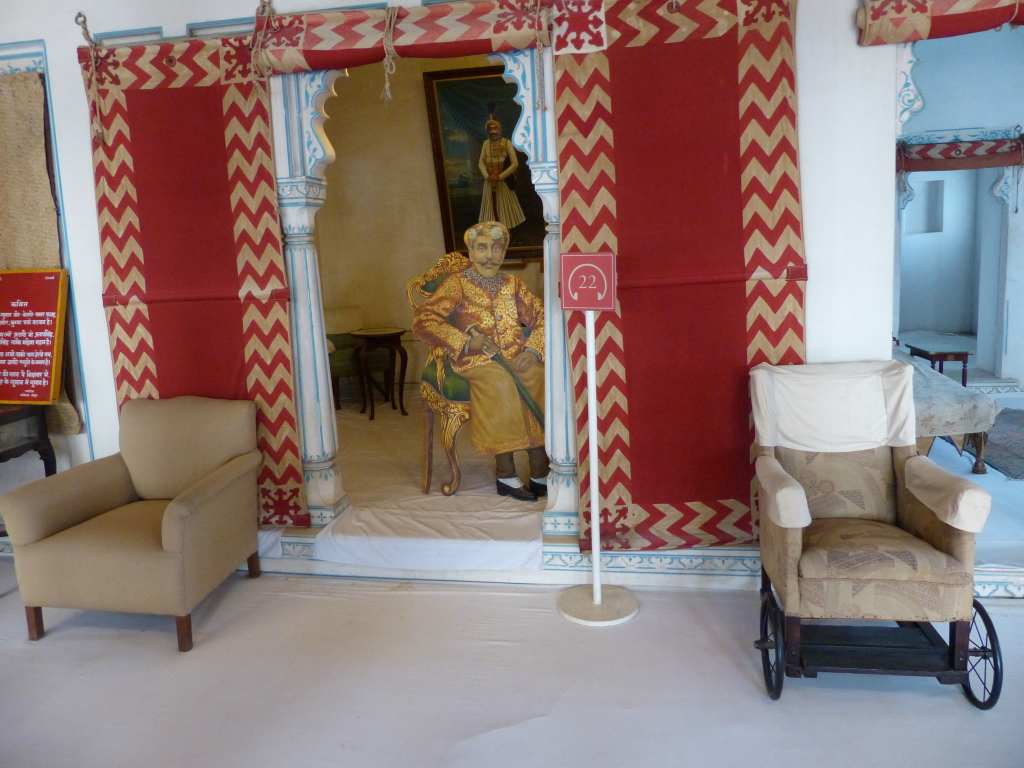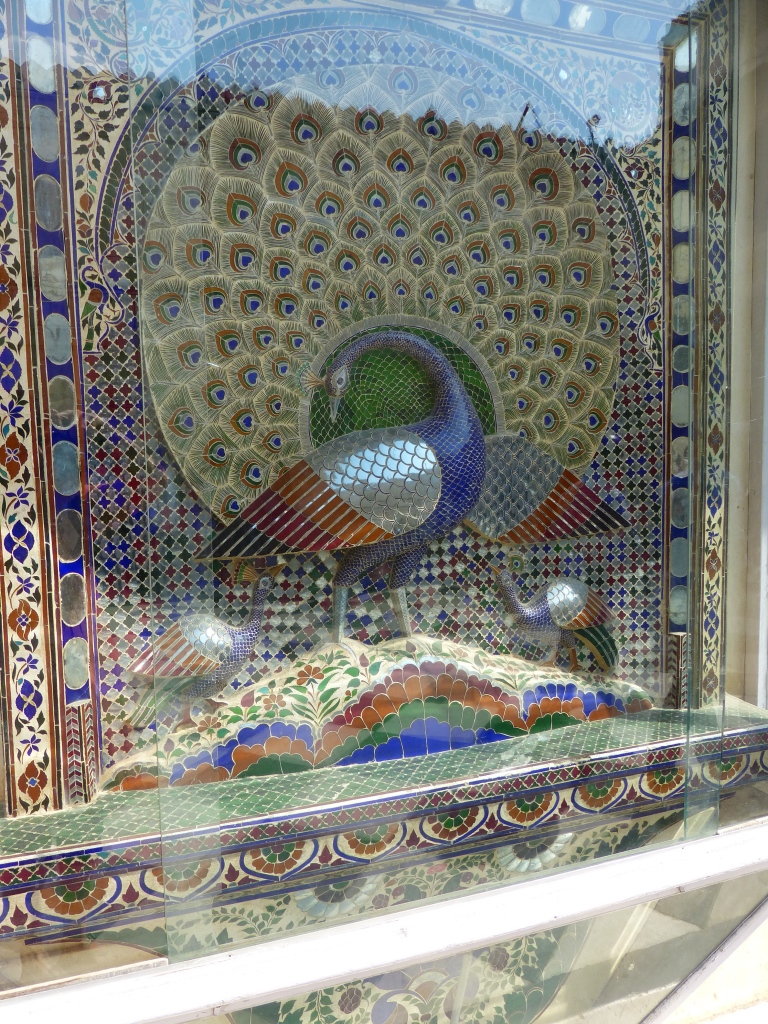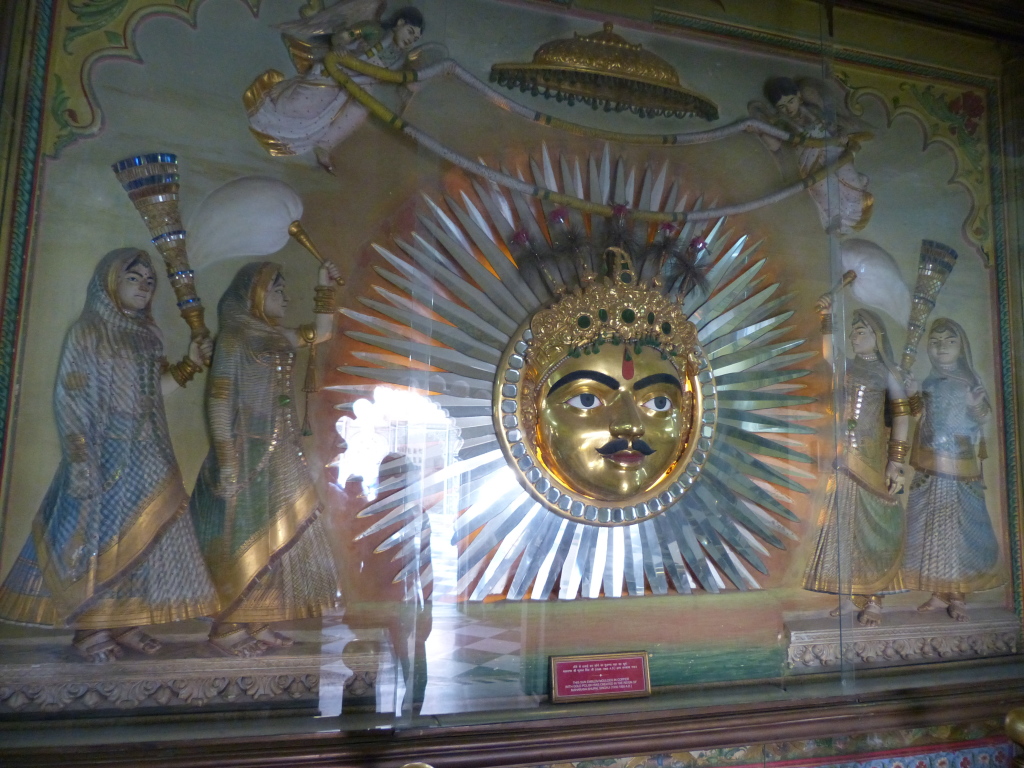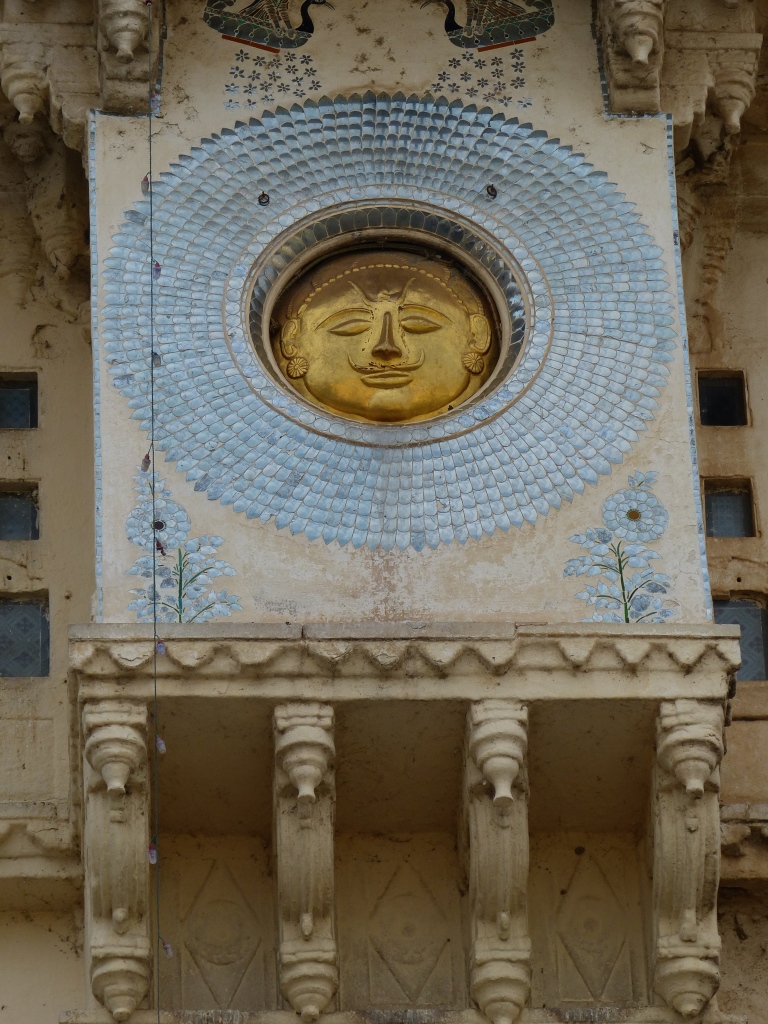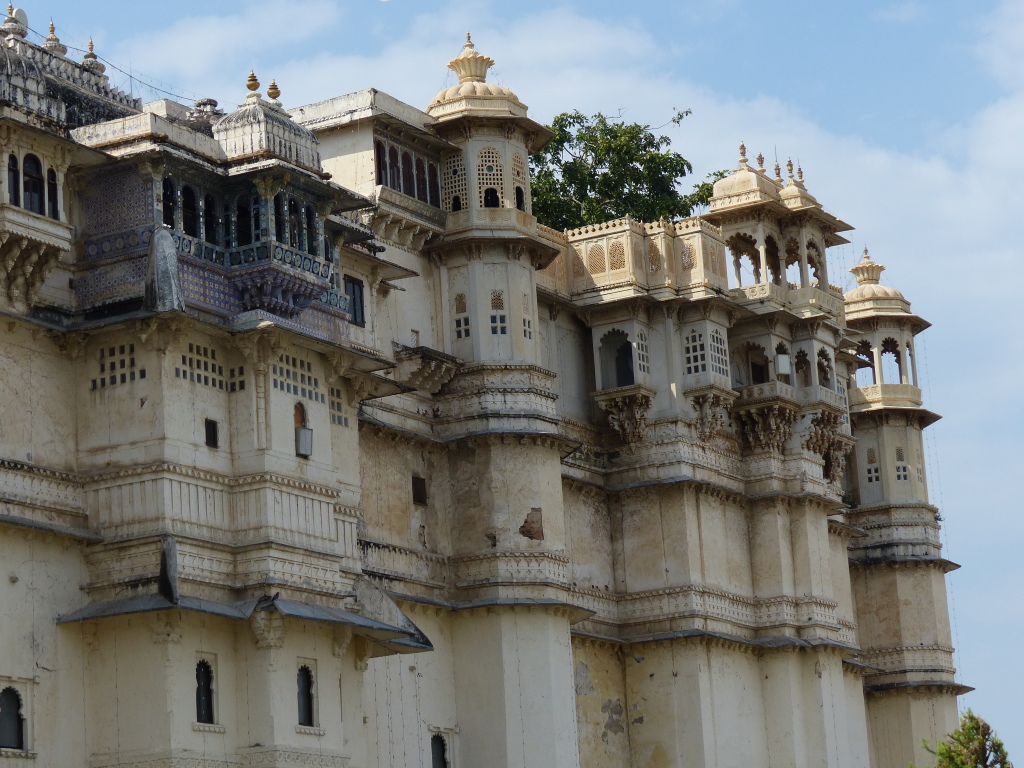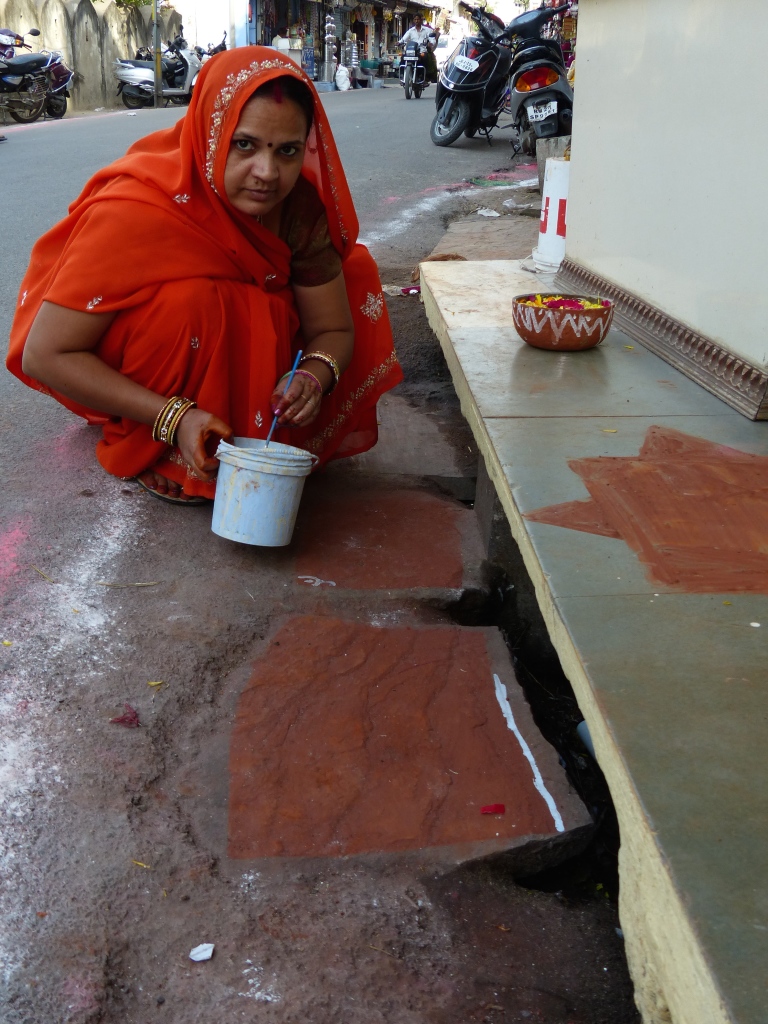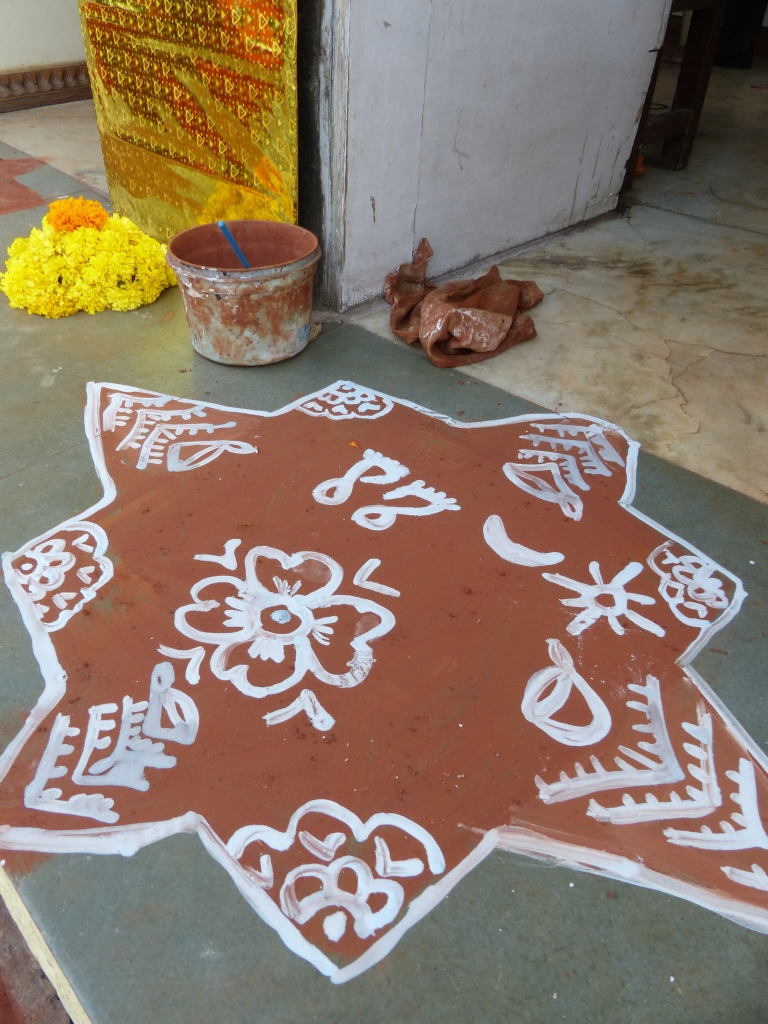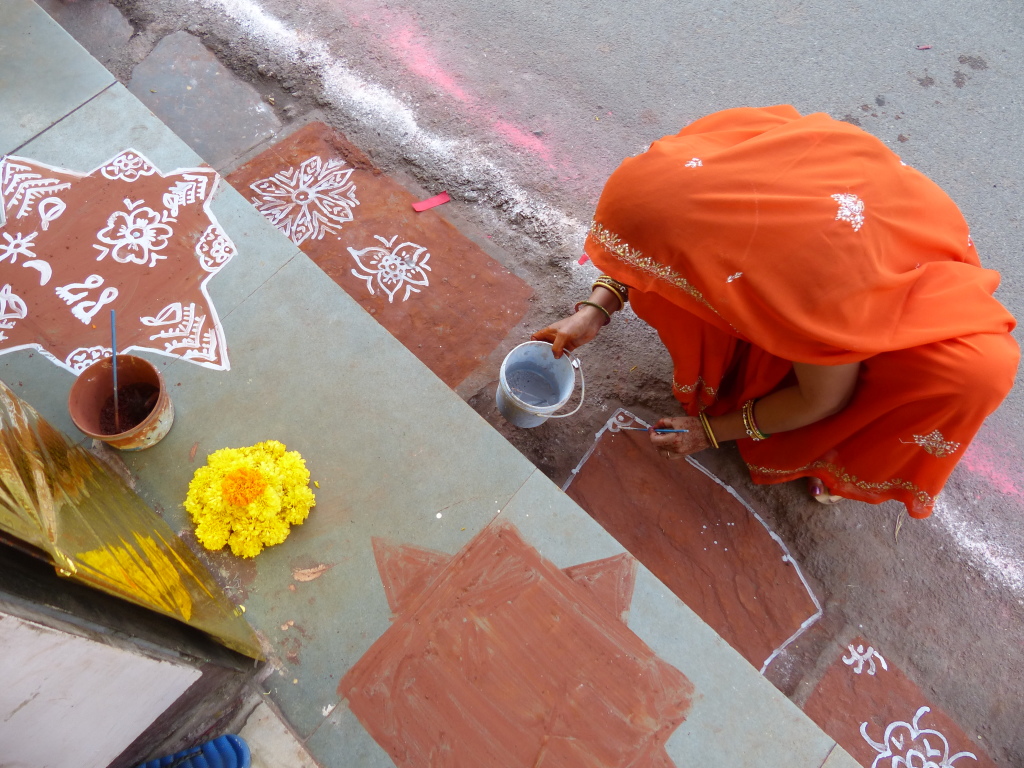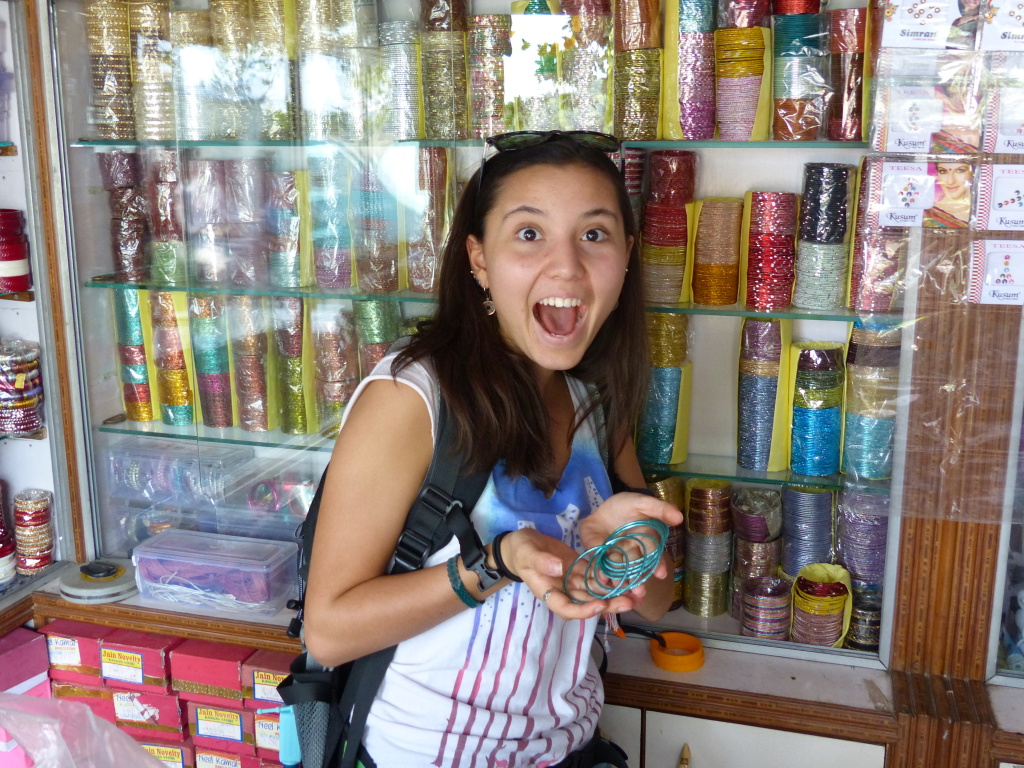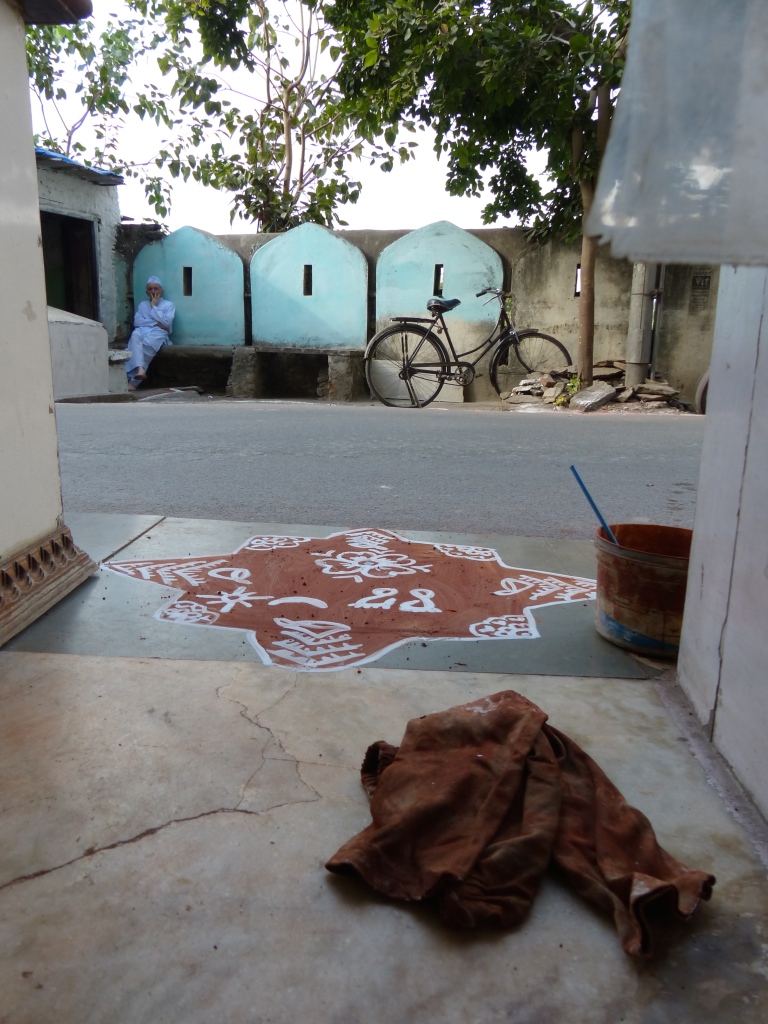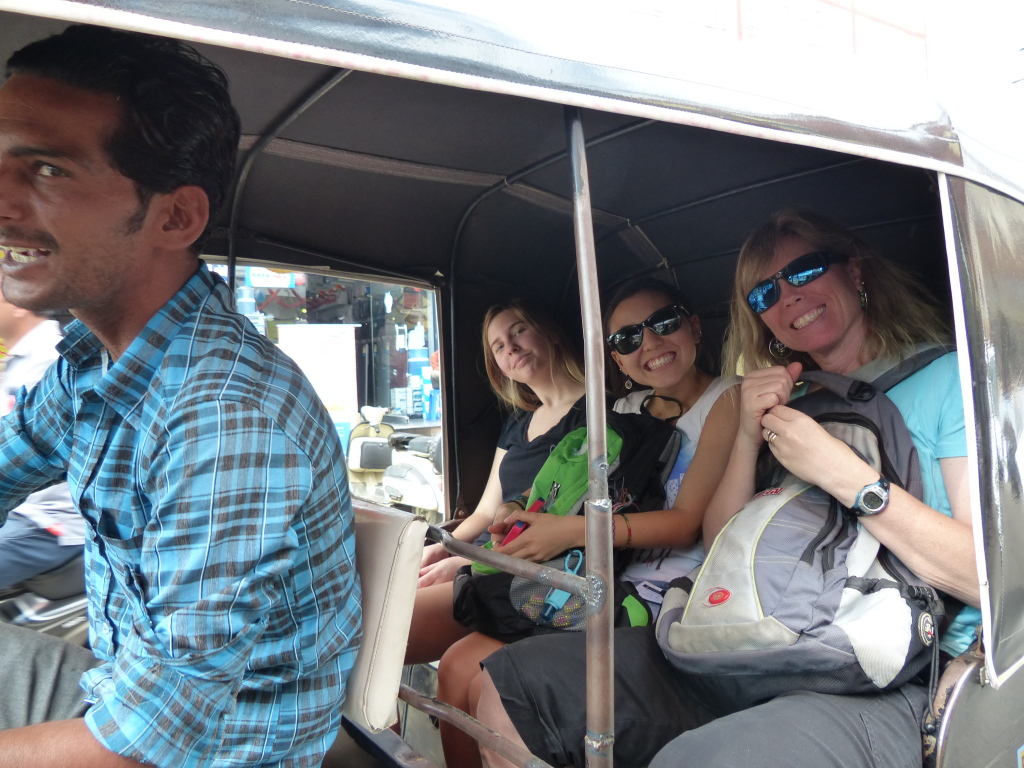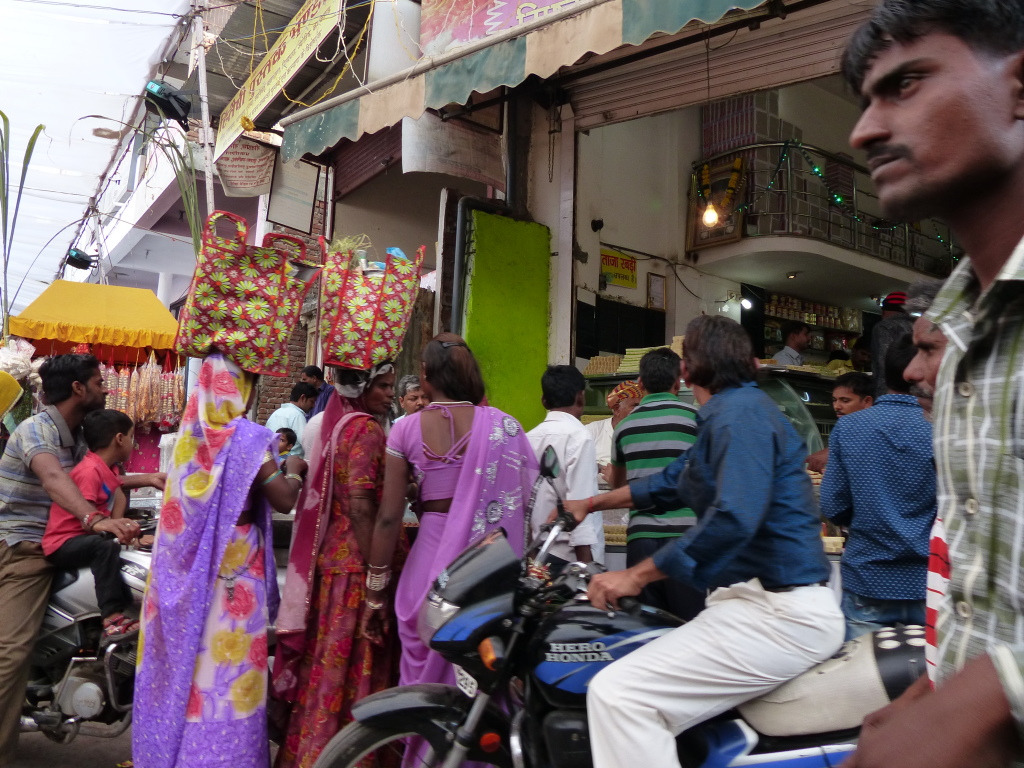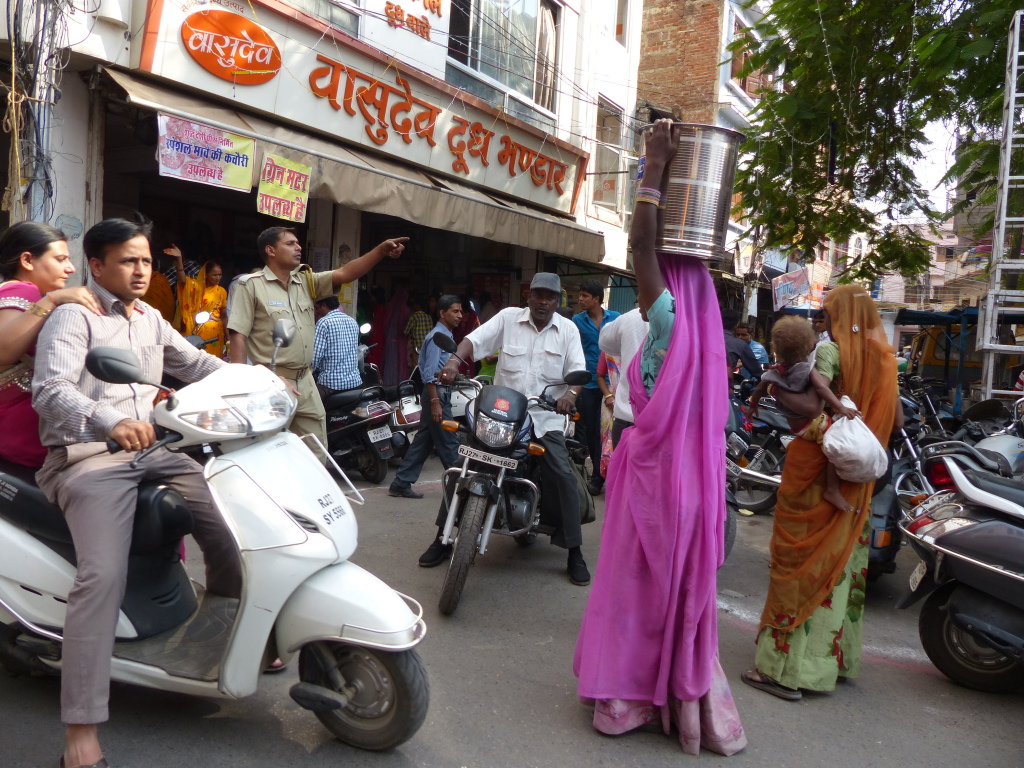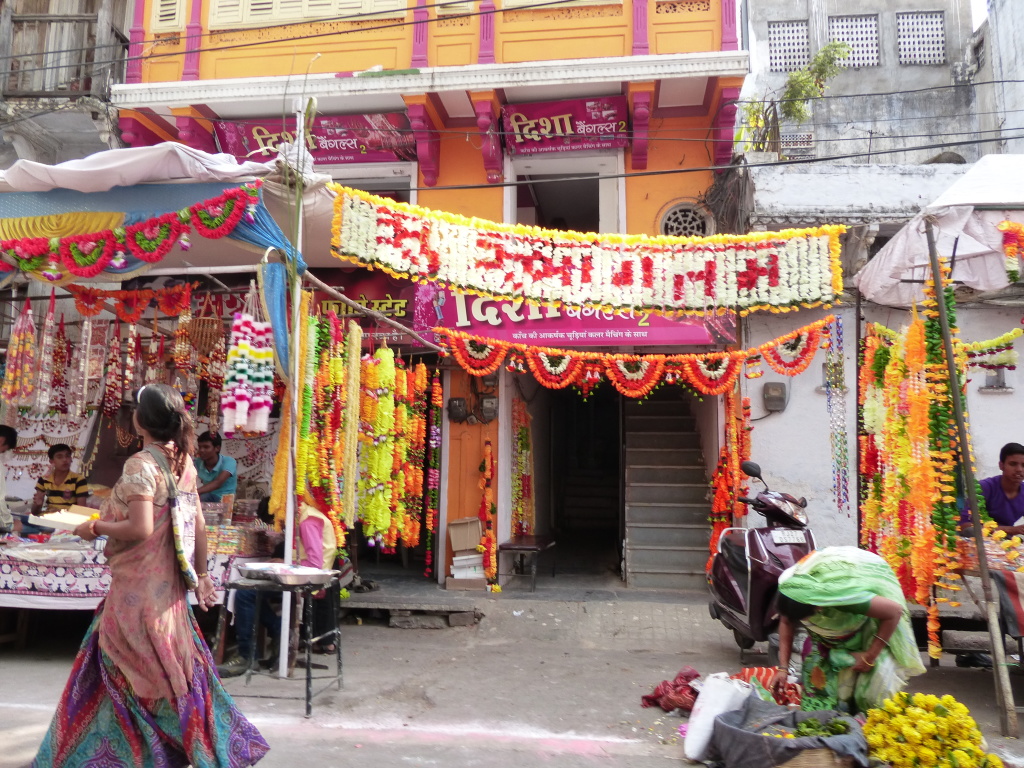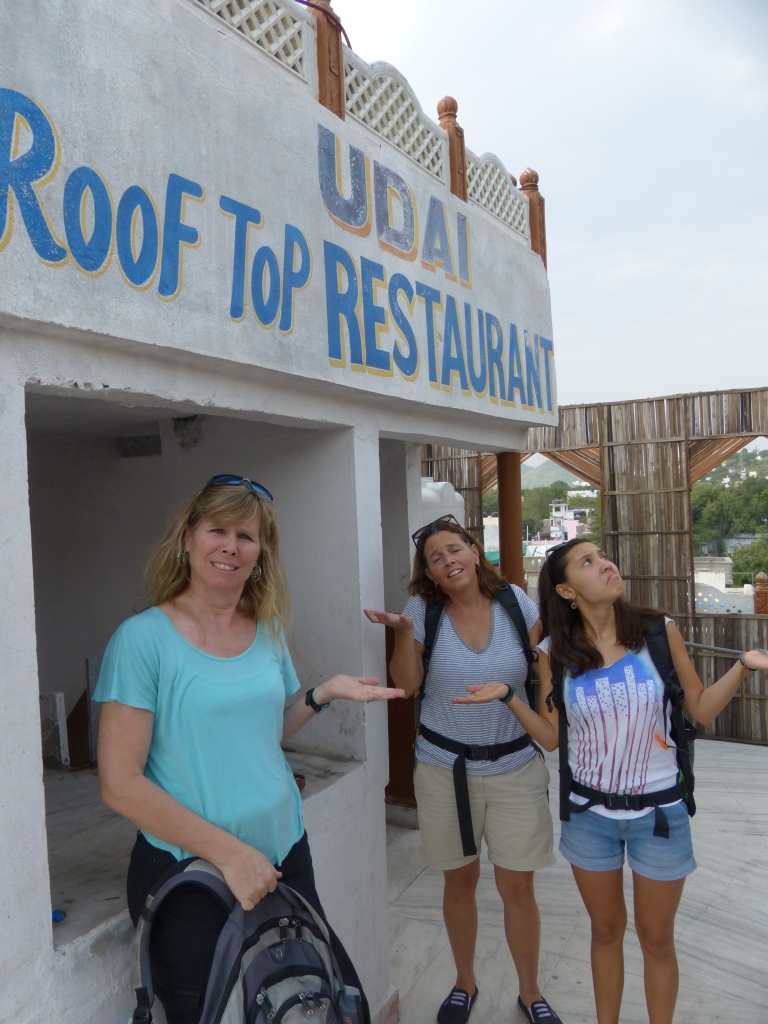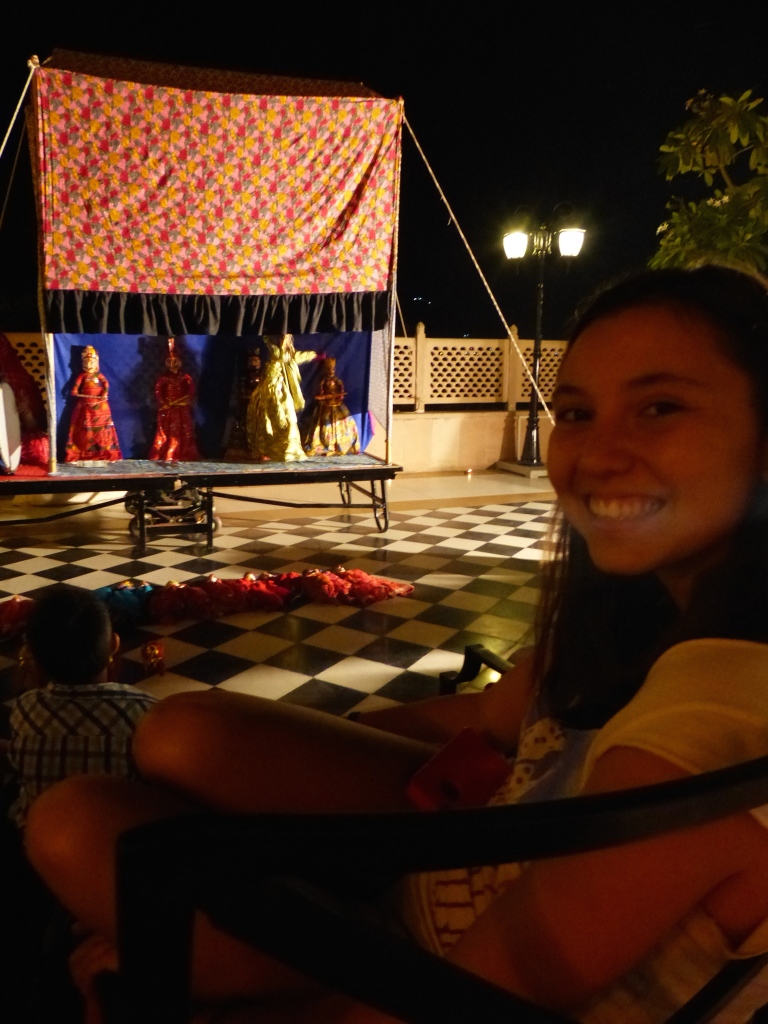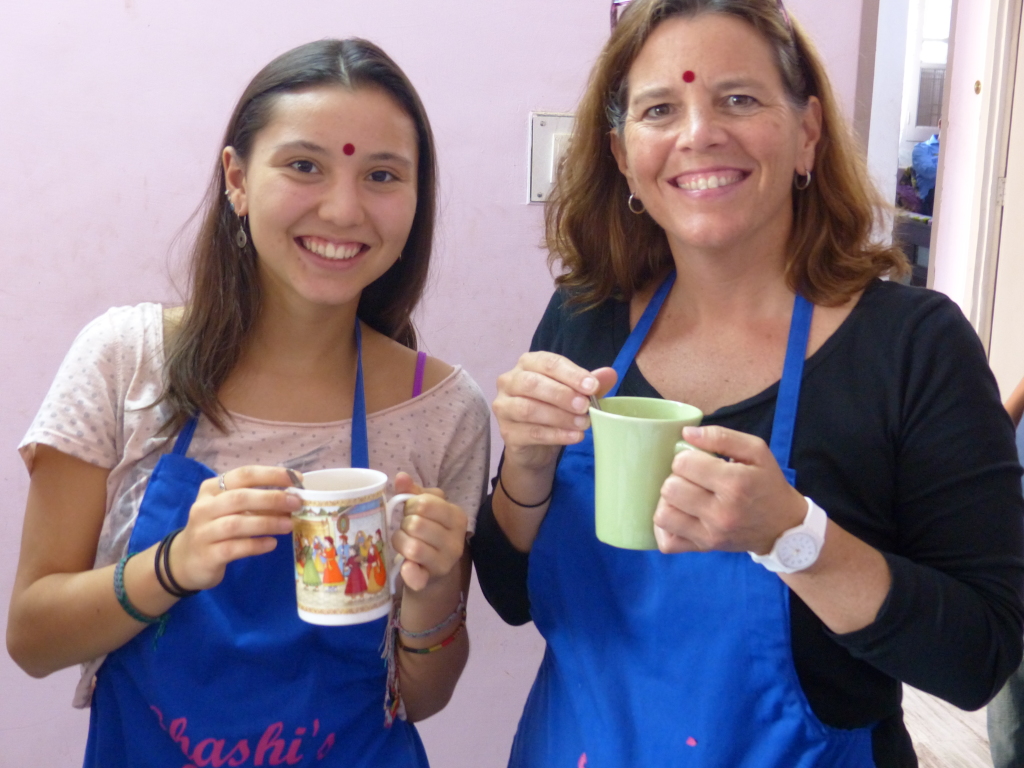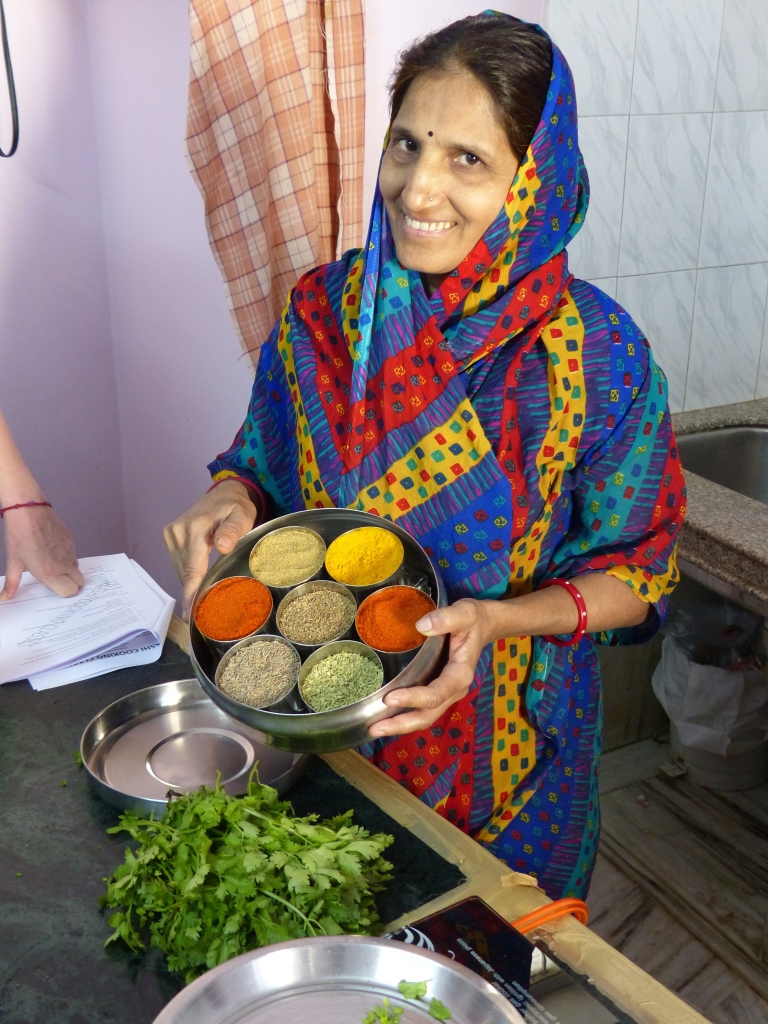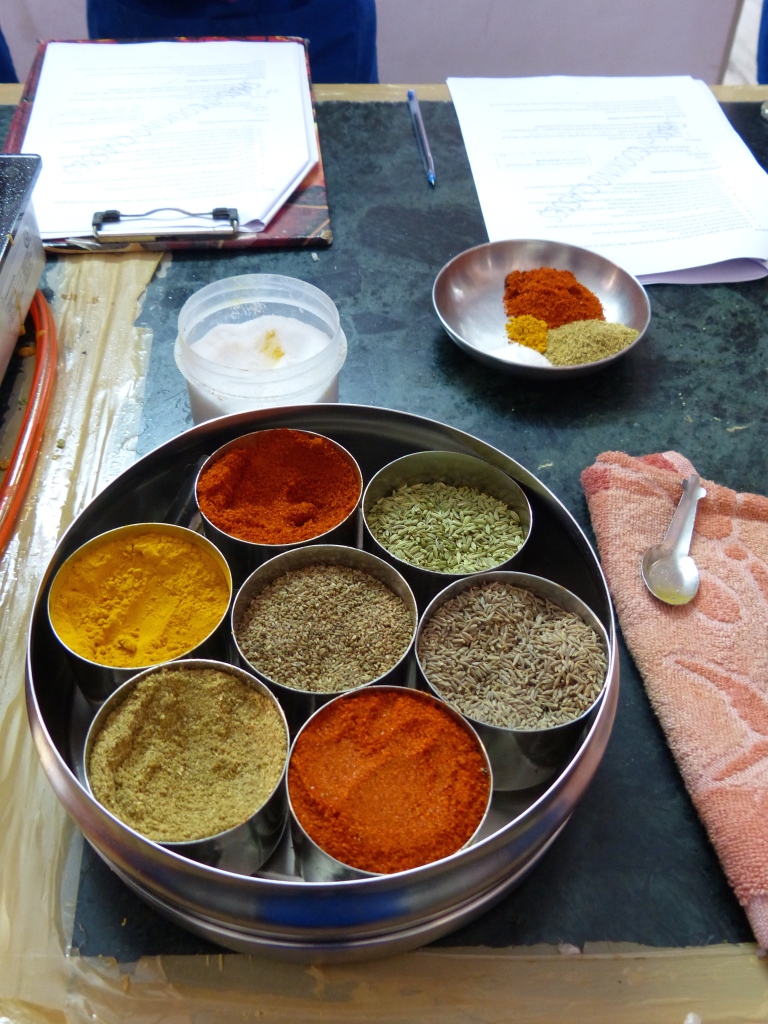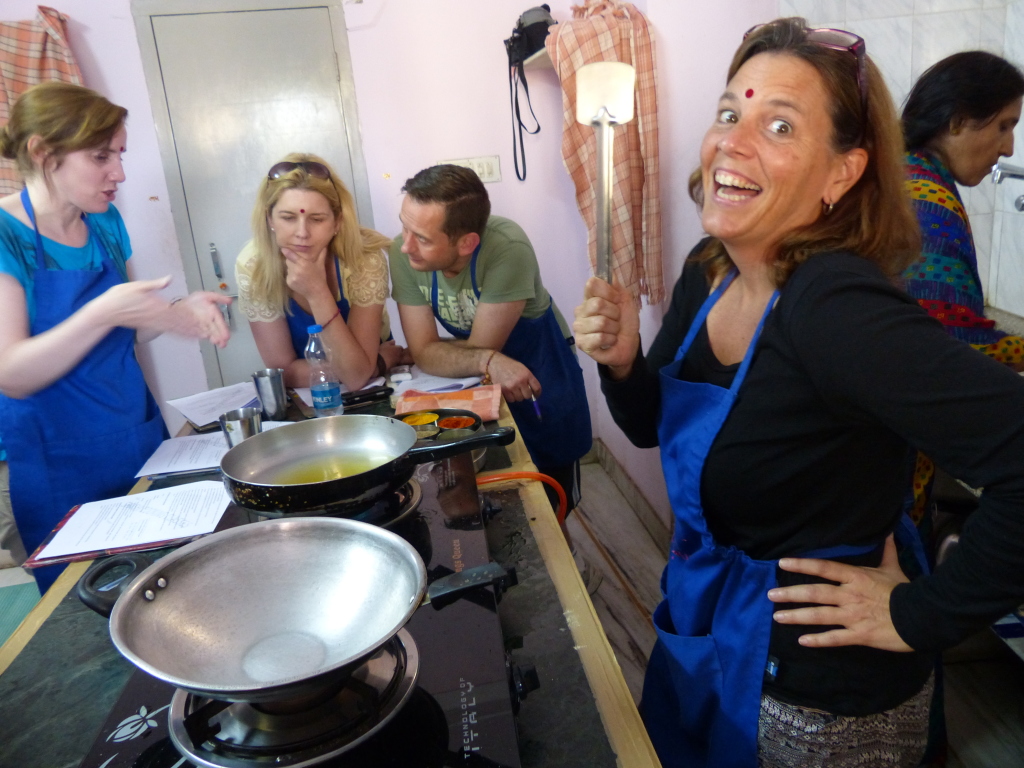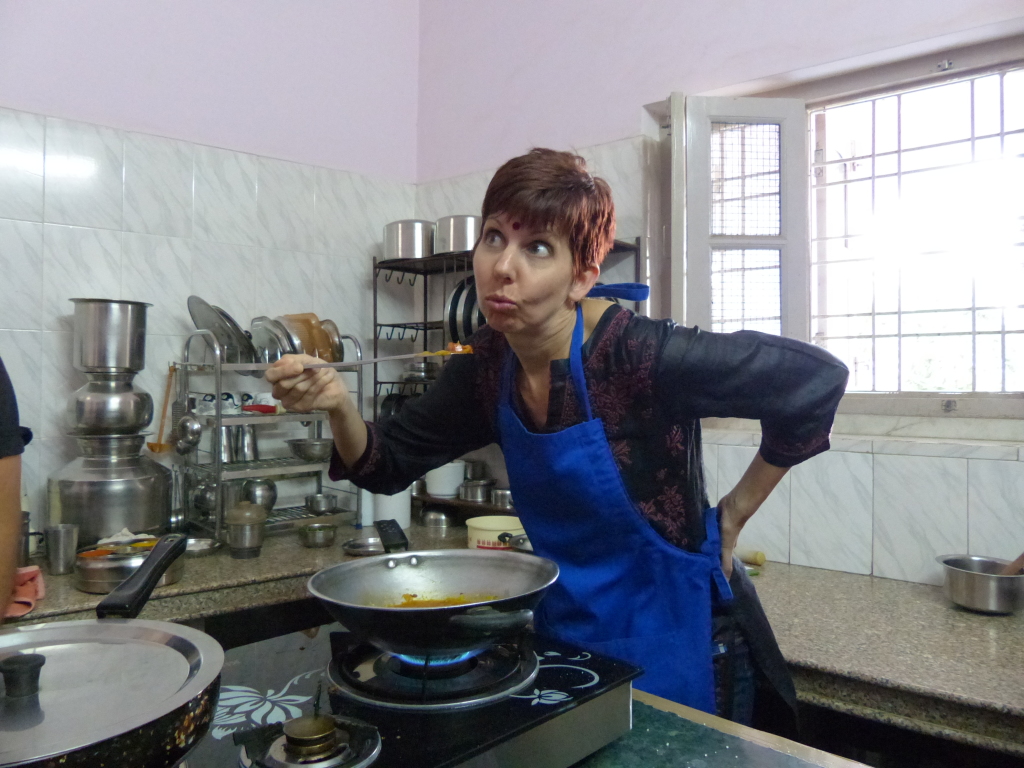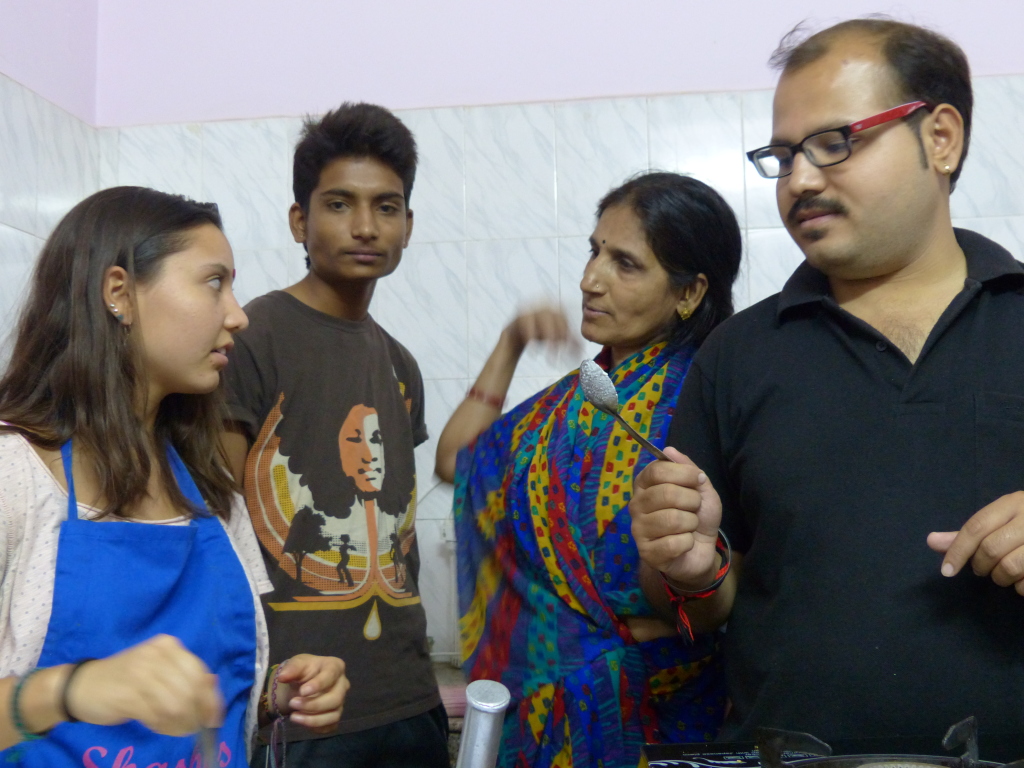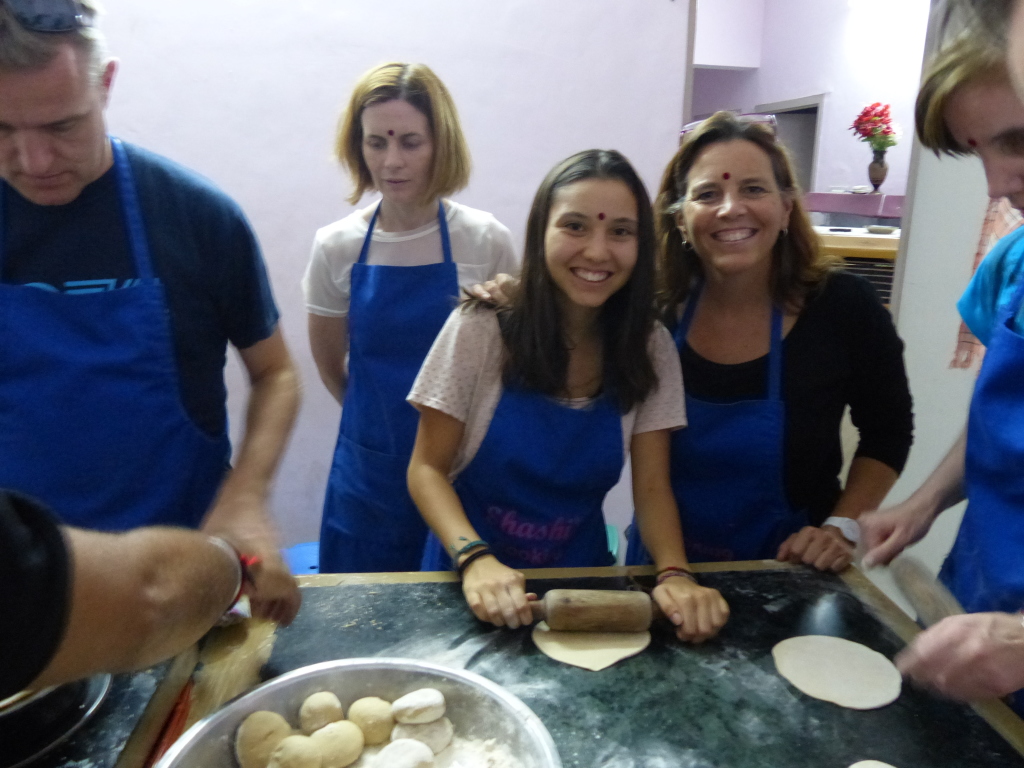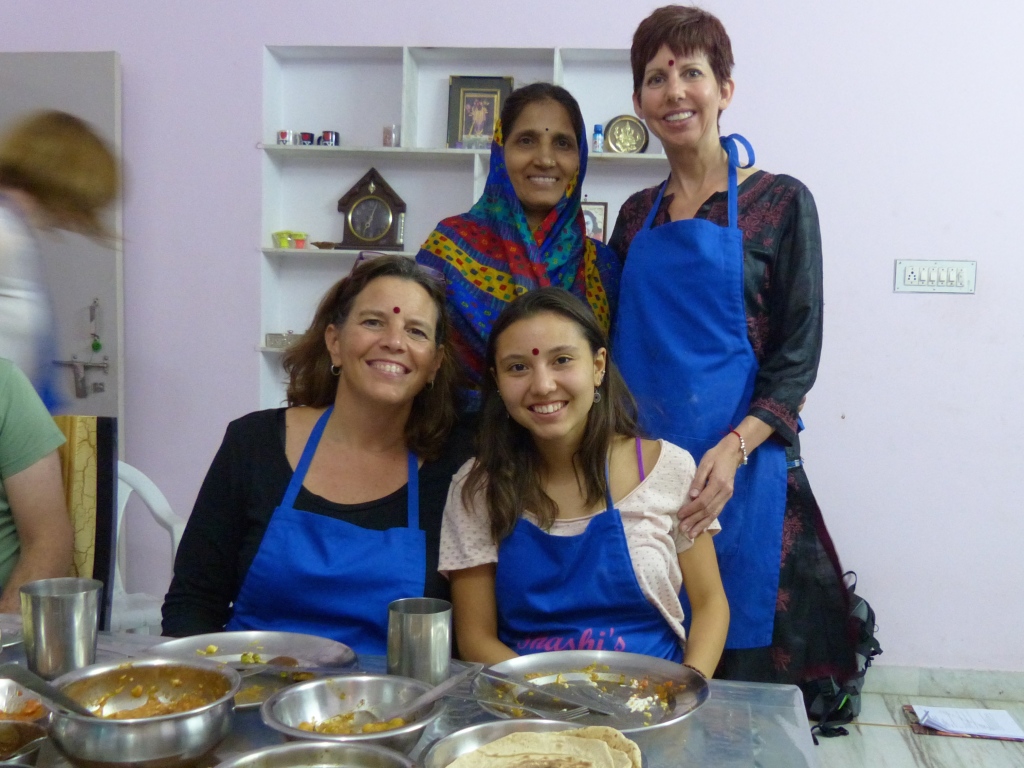With the “Amazing Race” music pounding as our subconscious background track, about 40 American Embassy School teachers careened around New Delhi Nov. 15 for the second annual AES Rickshaw Rally.
Tony and I dubbed ourselves “Sarojini Style” and dressed from head to toe in gear from Sarojini Nagar, a local market and land of low-quality goods and butchered English. My T-shirt featured a drawing of a panda and read, “Cute banda. Sometimes you have to realize that you’re the one bringing the gloom around. Learn to let go.” Tony’s said, “Cances are never given theyre taken.” I even sported the split-toe socks that make flip-flops easier to wear in cool weather.
The other teams were equally ridiculous. We all met at the American Embassy School’s Community Garden to collect the first clues of the morning. Our day would involve answering questions and snapping photos with my iPad to document our progress. We turned in our evidence at the lunch break and again at the end of the day for judges to calculate points.
After our major fail with the AES trivia questions, we received the next set of clues and dashed off campus in our assigned auto rickshaw. Our driver, Sunil Kumar, knew shortcuts to some of the destinations and eagerly kept on the lookout for anything that could earn us extra points, including five people on a motorcycle, specific animals (elephants, camels, monkeys, wedding horses), and an animal in a tuk-tuk. He even cheated at one point by asking some motorcyclists at the side of the road to pose on their bike without helmets. We thought that would be an easy shot to get, but Delhi’s new helmet law has met with a surprising level of compliance.
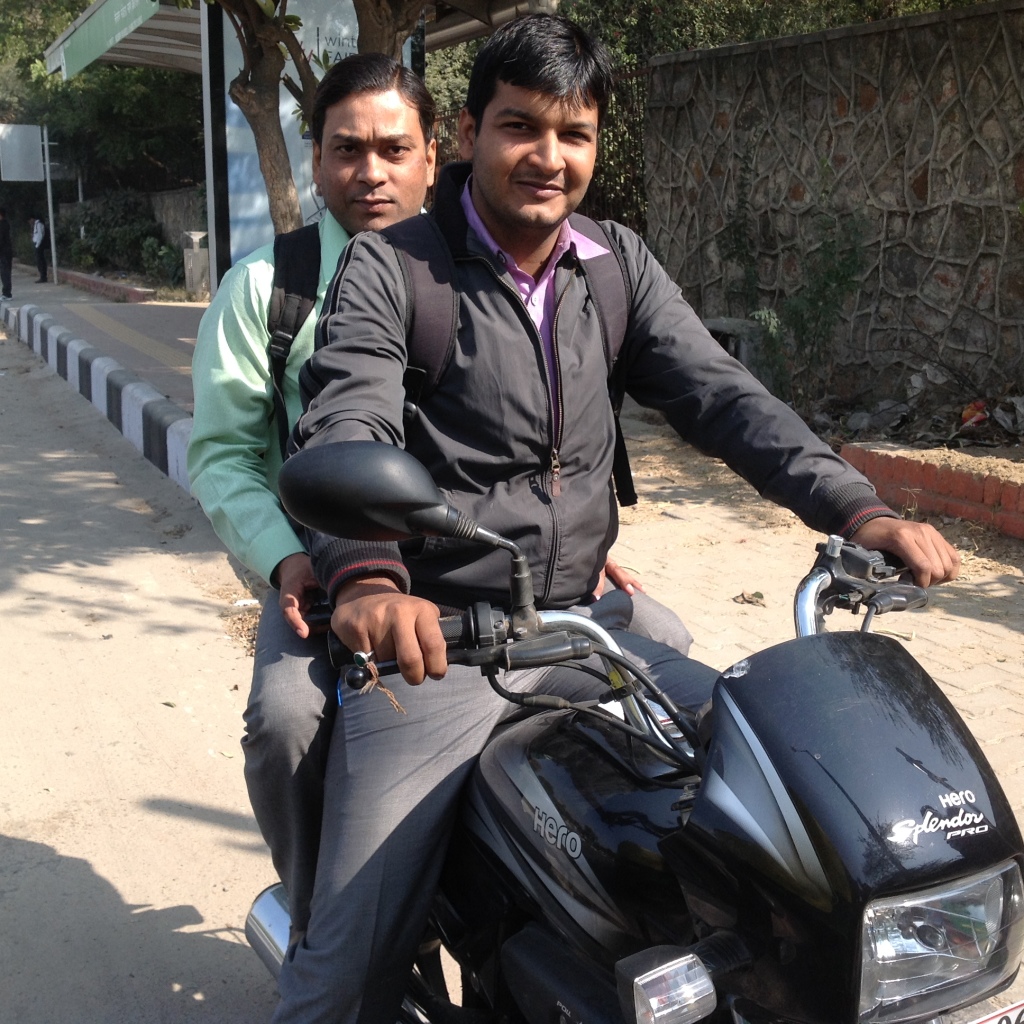
At lunch, I didn’t hear my phone ring, but I had two missed calls from Sunil Kumar, who told me later, “Madam I call you because there is elephant!” Rats, we missed it.
After a short ride in the Delhi metro, where I had to record the stops (two) and cost of a ticket (8 rupees or about 13 cents), I reconnected with Tony and Sunil Kumar to tackle our list of tasks at the following places. I’ve included the info we were given about each stop (in italics).
Buddha Jayanti Park – This park was created on the occasion of the 2500th anniversary of Buddha’s enlightenment. It was dedicated by the Dalai Lama in October 1993.
This shot was our attempt to “channel your inner zen” with the Buddha statue.

Laxmi Narayan Temple – Mahatma Gandhi inaugurated this temple in 1939. At that time, Gandhi said the temple would not be restricted to only Hindus, and people from every caste would be allowed inside. The temple is spread over 7.5 acres and is one of the major attractions of Delhi and attracts thousands of devotees every year.
Here, we had to find a priest and ask a few questions about the temple. Photography wasn’t allowed inside, but it was a beautiful peaceful place. We’ll visit again on a less frenetic day!
Gurudwara Bangla Sahib Sikh Temple – It is the most prominent Sikh house of worship in Delhi. Langar is a traditional concept, which includes cooking, serving, and eating together in a communal dining hall. Every Gurdwara has a Langar facility. Volunteers prepare everything. Seva, selfless service, and the practice of sitting side by side without regard to caste, color, creed, or rank, in a common dining area both serve to nourish the soul cleansing it from the effects of ego.
This was one of our favorite stops. We popped in to the foreign visitors office, where a lady asked, “How many of you are coming? It would be easier if you all came at once.” True, but that would defeat the purpose. She tied a scarf on Tony’s head and led us to the huge kitchen. We donated a bag of rice, and Tony took a turn stirring the massive pot of vegetables. Volunteers sat at a low table, rolling out chappatis. Pretty fantastic!
We had to skip several stops on the itinerary, including India Gate and Safdarjung Tomb, as we knew the next destination was mandatory and clear across town: Very Special Arts India. The organization works with underprivileged local children and kids with special needs. Their motto is, “No mental or physical challenge need ever limit the human potential to create and excel.” The kids and volunteers at VSAI taught us a Bollywood dance (which was very challenging, especially in flip flops!) and showed us how to use block-printing techniques to make Christmas cards. We had a lot of fun interacting with the kids, and we donated about $300 to support the organization’s work.
Teaching us the dance steps. Yikes!
Afterwards, we all gathered at the nearby mall for lunch at Underdoggs, a sports bar. Rickshaw Rally judges worked quickly to tally our points while we rested, ate and laughed about our morning.
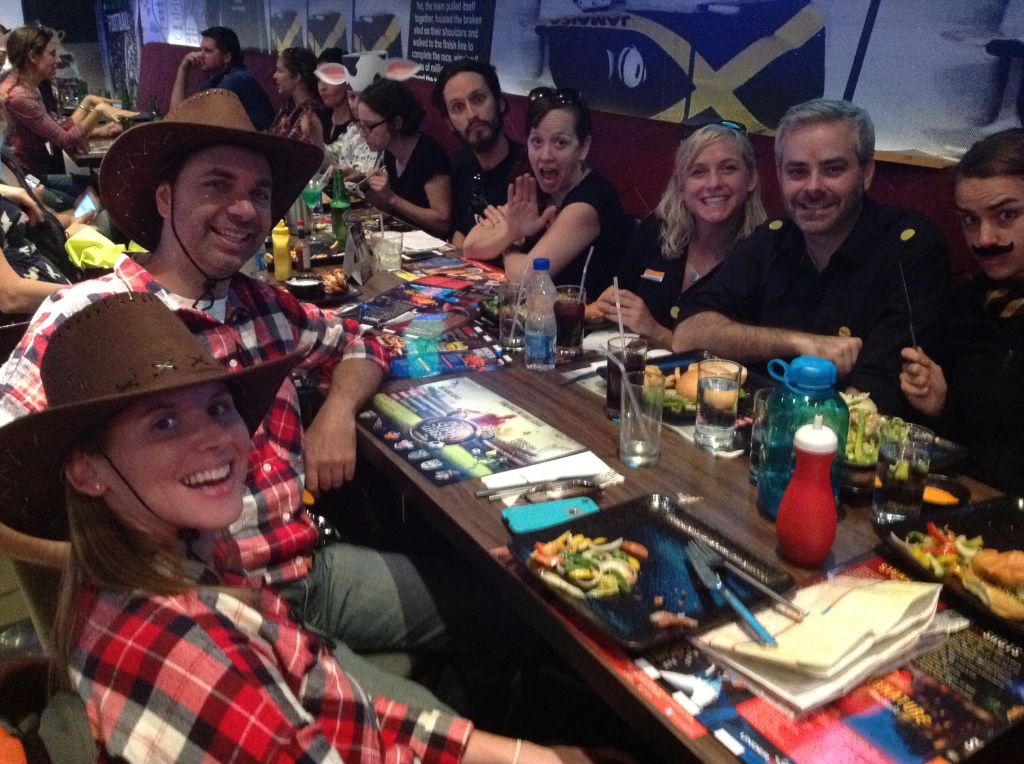
The judges handed out the afternoon clues and released us in order of points earned. Sarojini Style came in darn close to last. We ran out the door and met up with Sunil Kumar, who sped to our next destination, dodging traffic and even driving off the road at times. We arrived at Qutab Minar at the same time as the point leaders! Woo hoo! Here was our afternoon line-up:
Qutab Minar – Qutab Minar, the tallest brick minaret in the world, is an incredible example of early Indo–Islamic architecture. It was built in 1206, but the reason remains a mystery. Some believe that it was made to signify victory and the beginning of Muslim rule in India, while others say it was used to call the faithful to prayer. The tower has five distinct stories, and is covered with intricate carvings and verses from the holy Quran.
Here we had to find a tourist and pose like we were holding the top of the minaret. I grabbed the first person I saw inside the gate, and he willingly complied. Stupid sun!
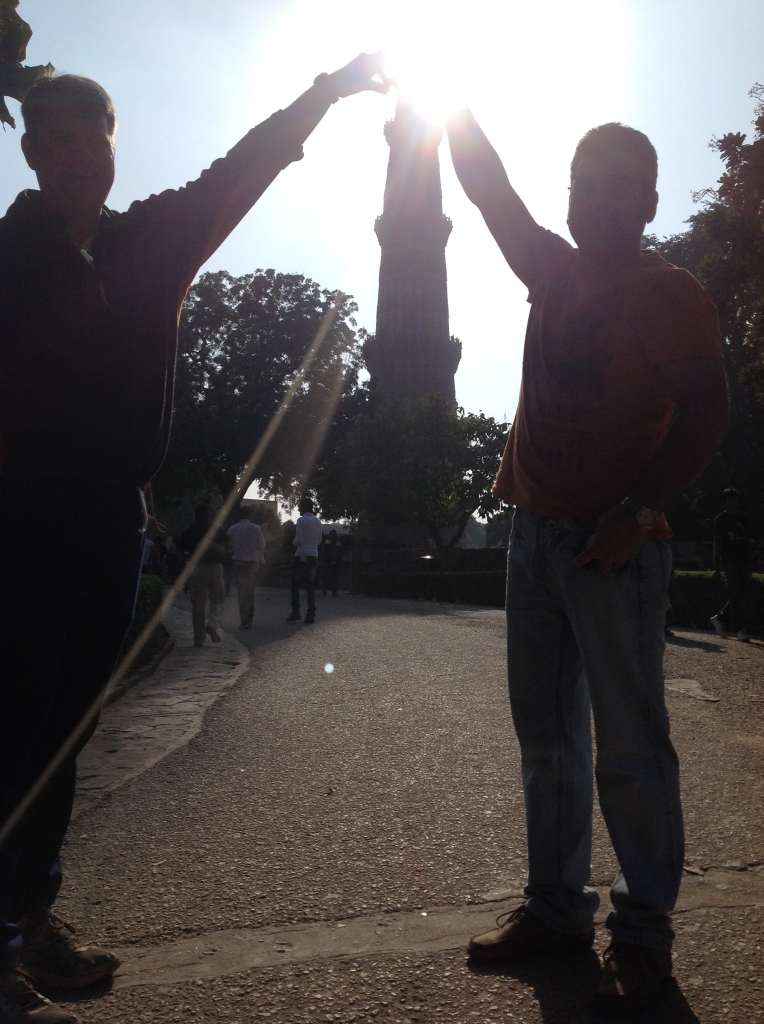
Atre Yoga Studio – We met up with several other teams in this neighborhood. In exchange for help finding the yoga studio, I showed Bernie how to do the designated poses. We were rushing and trying not to identify bits on the dirty concrete sidewalk, so it’s not my best form.
Ardhachandrasana
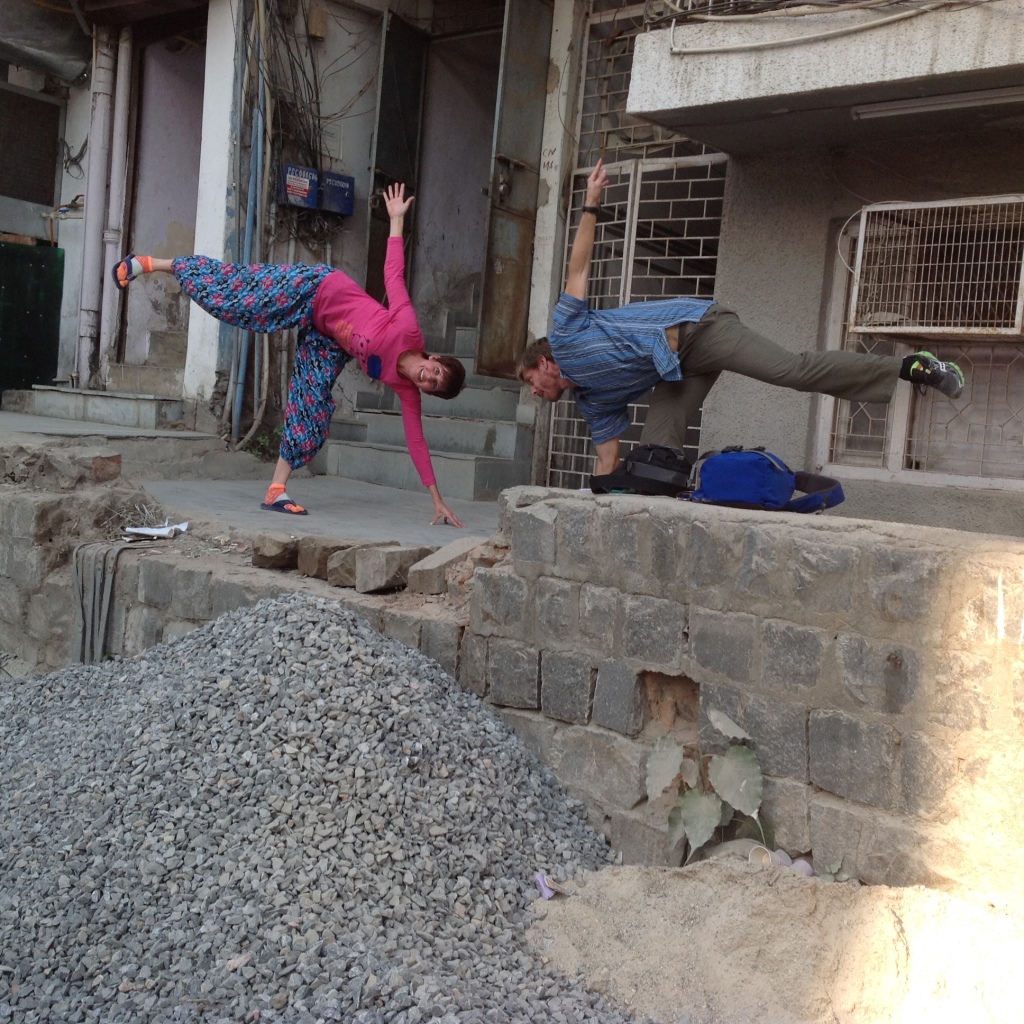
Natarajasana – well, we didn’t quite nail this one.
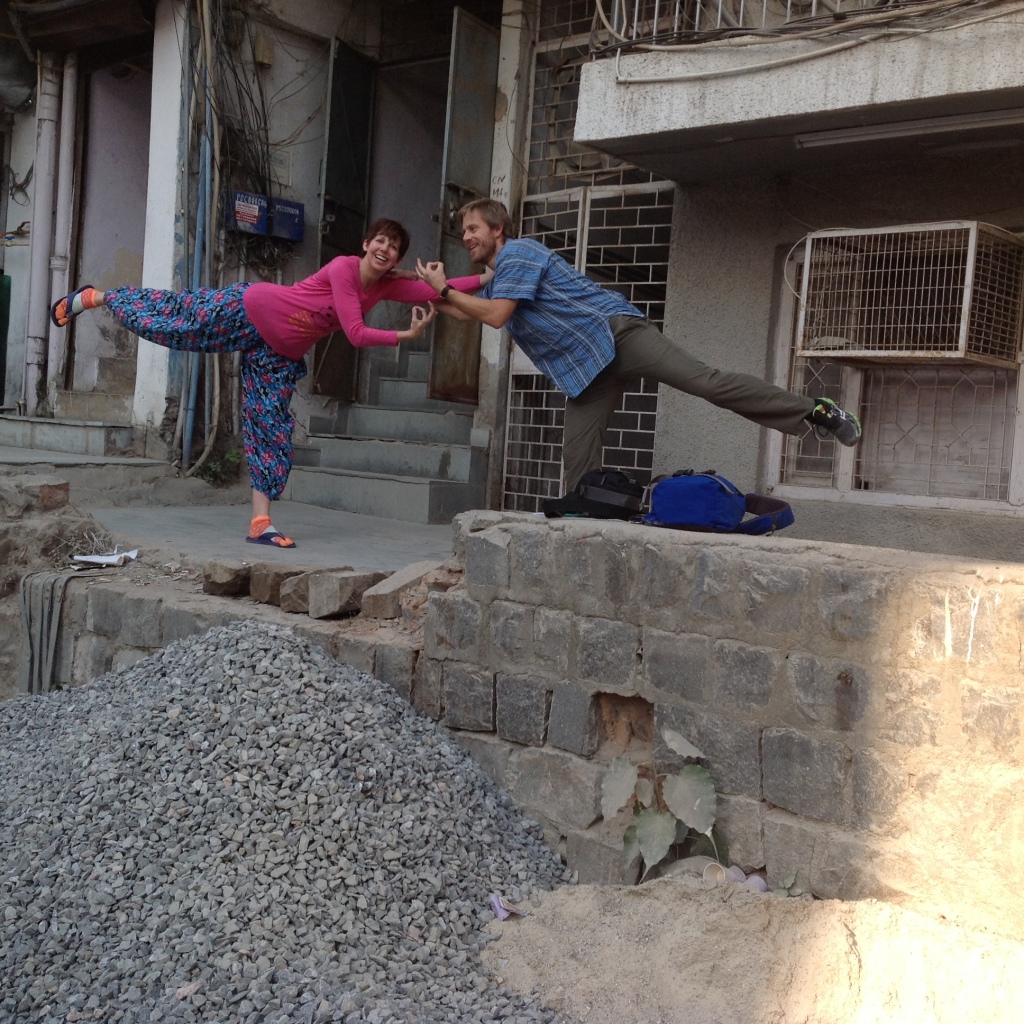
Chittaranjan Park – It was established in the early 1960s under the name EPDP Colony or East Pakistan Displaced Persons Colony. It remains home to a large Bengali community, and is home to Kolkata-style street-food stalls, Bengali cuisine, fish markets, temples and cultural centers.
Our task here? Take photos of four different kinds of food and write the name of the park in Bengali. Done and dusted.
Sarolini Nagar – Finally, our last destination, the market where Tony and I had shopped for our costumes.
Nagar means market in Hindi. Sarojini Naidu, who the market was named after, was a famous Indian freedom fighter and poet. Sarojini was the first woman to become the governor of an Indian state. She was the second woman to become the president of the Congress in 1925.
We had a few tasks here: I got mehendi. Tony pretended to be one of the roaming belt sellers. He also posed with the jalebi maker and ate some with a couple other teams. We snapped a creepy mannequin. And we collected a blanket from a specific stall to donate to a local charity.
With Sunil Kumar’s help, we got extra points for the two guys on the motorcycle, as well as this creepy monkey and the wedding horses. Tony spotted the dog in a rickshaw! We never did find five people on a bike.
Tony’s glasses didn’t survive intact. Bummer, they were so stylish.
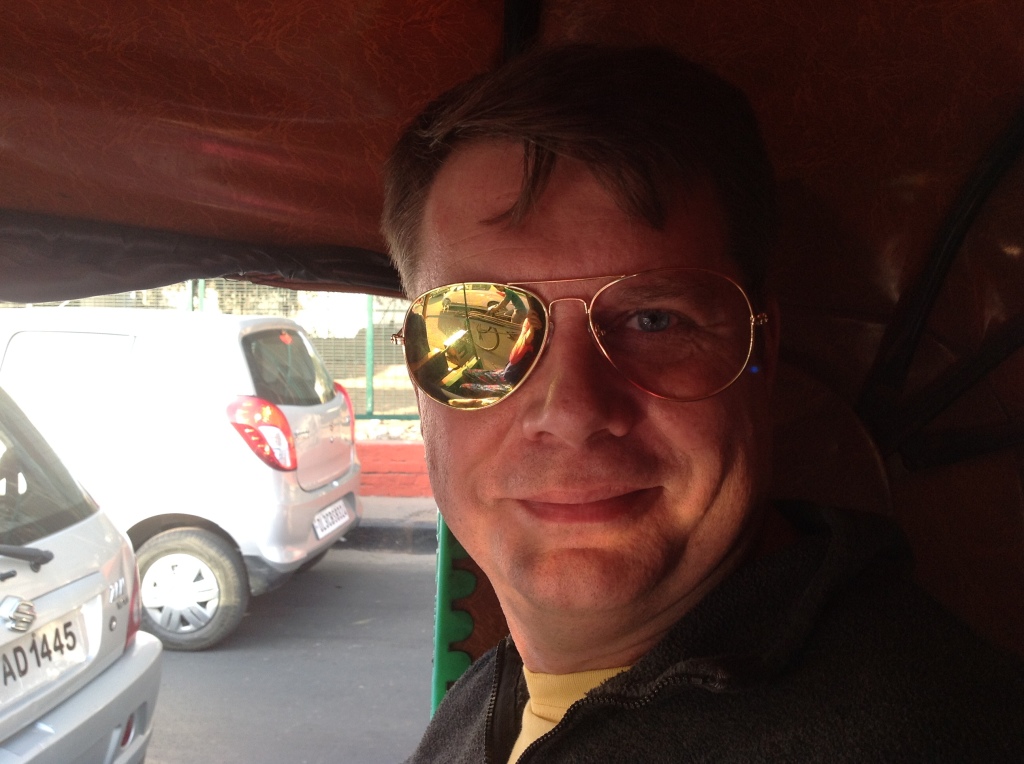
We wrapped up the day in our own neighborhood at the Pint Room (after pausing for chai with Sunil Kumar and a few other teams).

Sarojini Style ultimately never came close to winning, but we had a great day (after some initial bickering…).

The winners? Craig and Holli – or Team Dengue Duo. Congratulations!
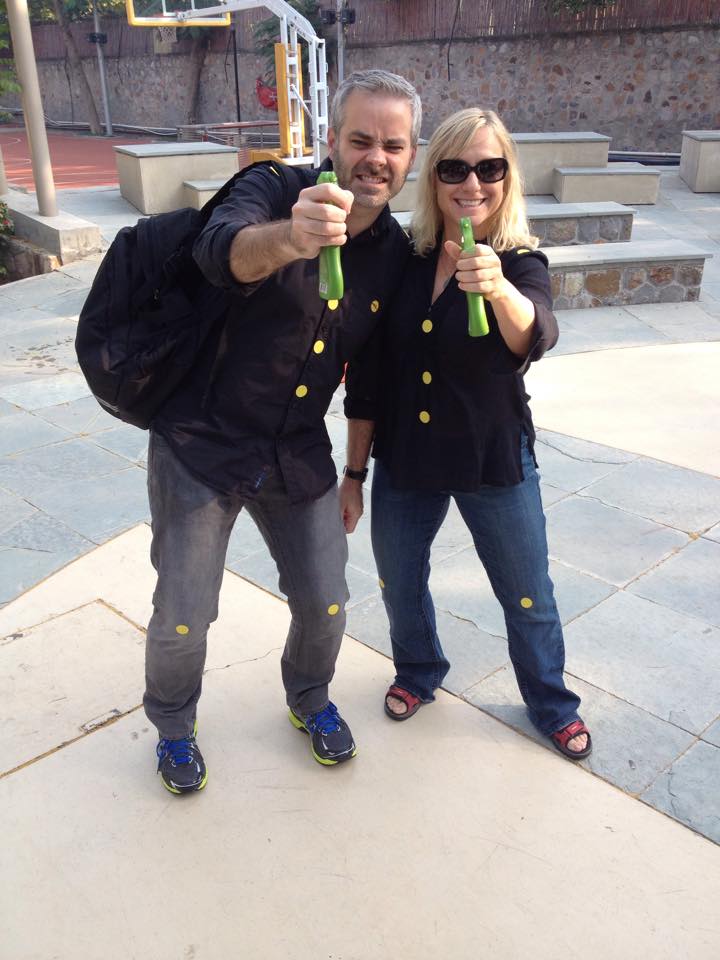
For more photos of the AES Rickshaw Rally, check out my flickr album – AES Rickshaw Rally. Thanks to Kate, Kathleen and Clint for organizing!

